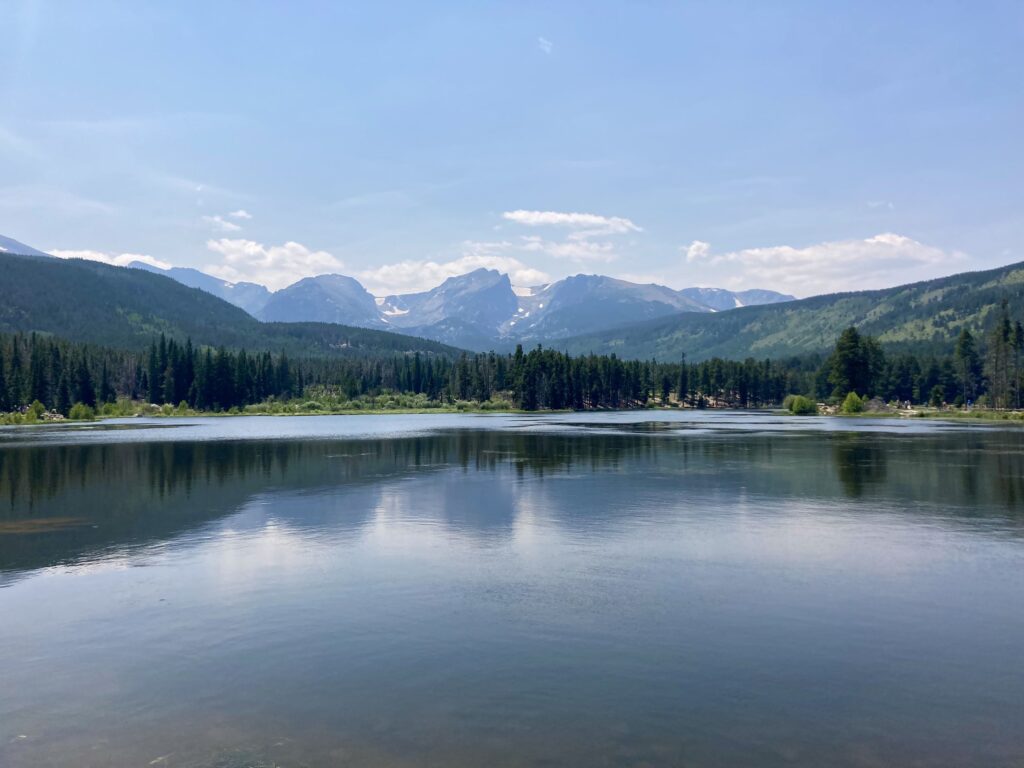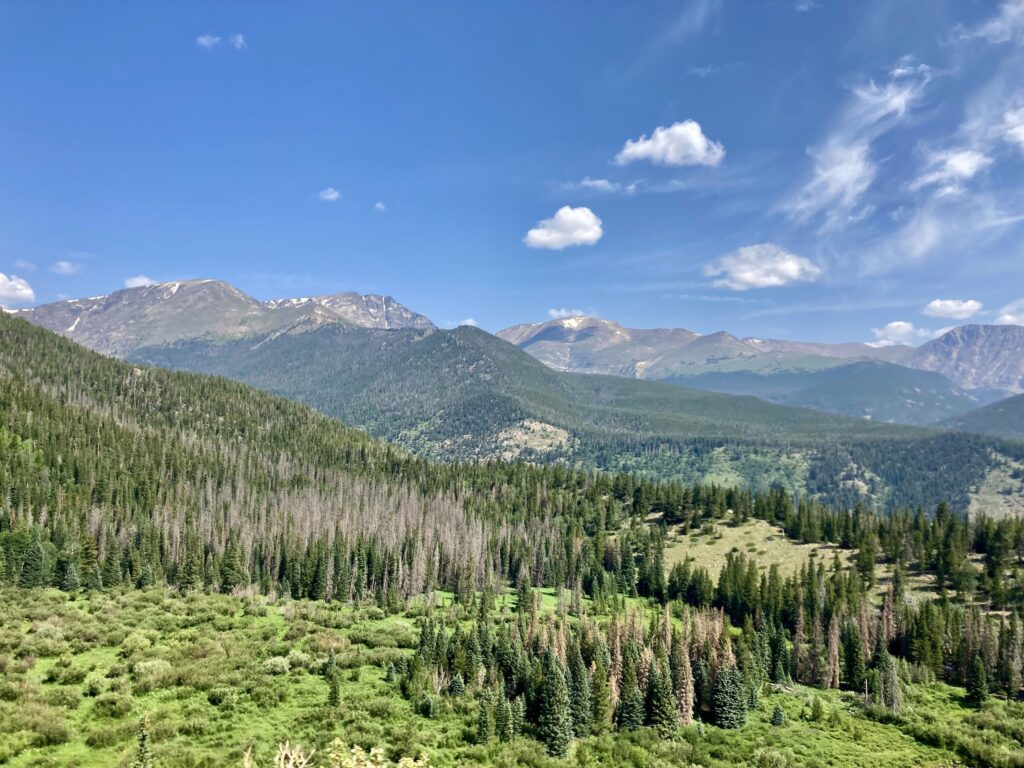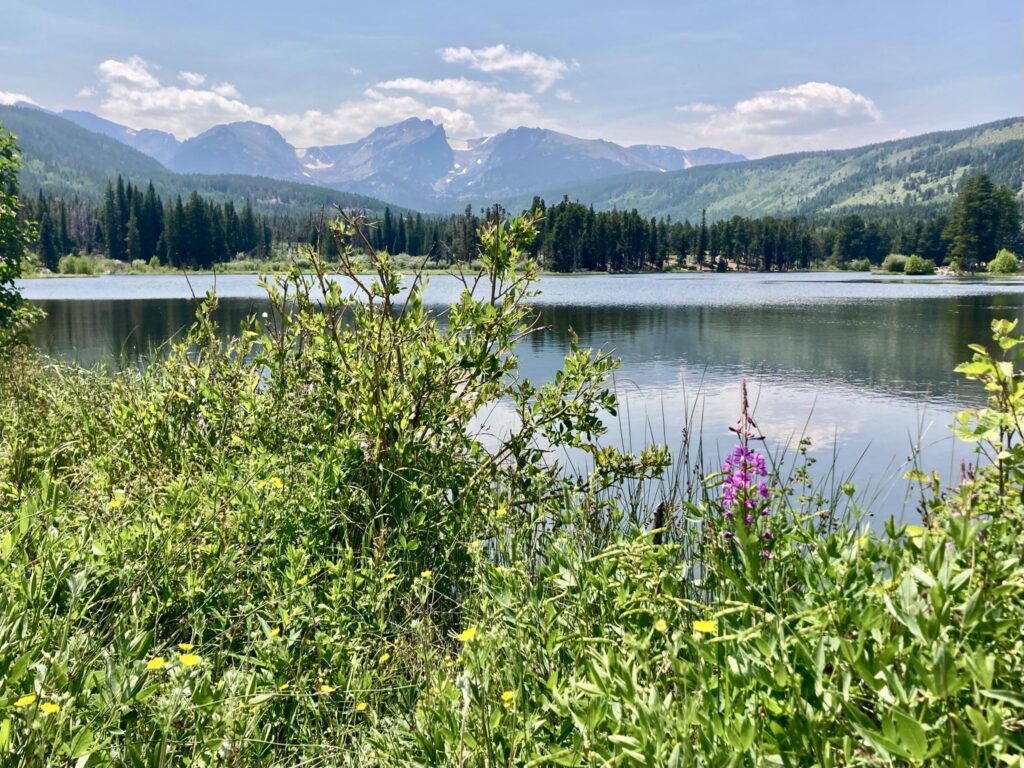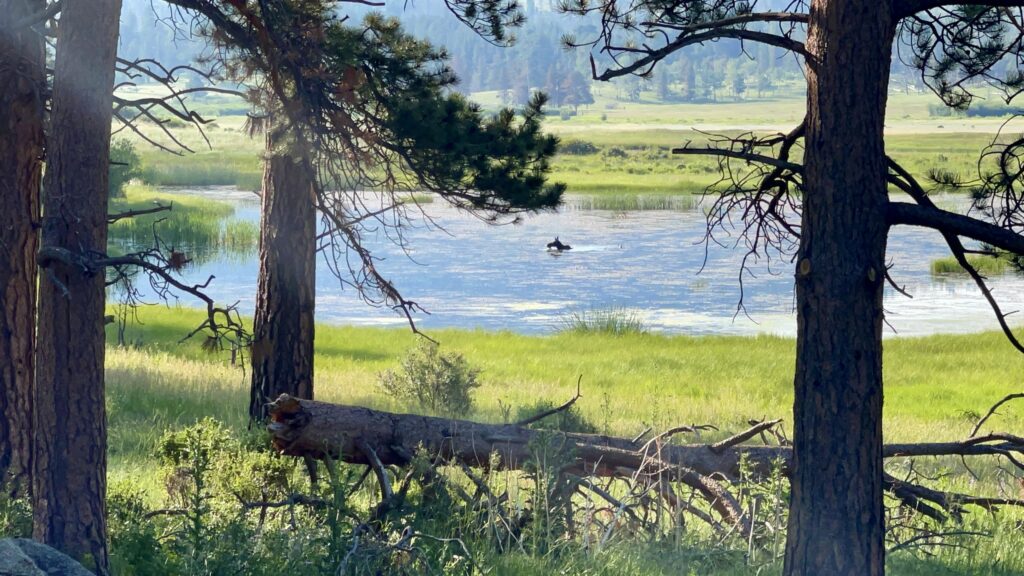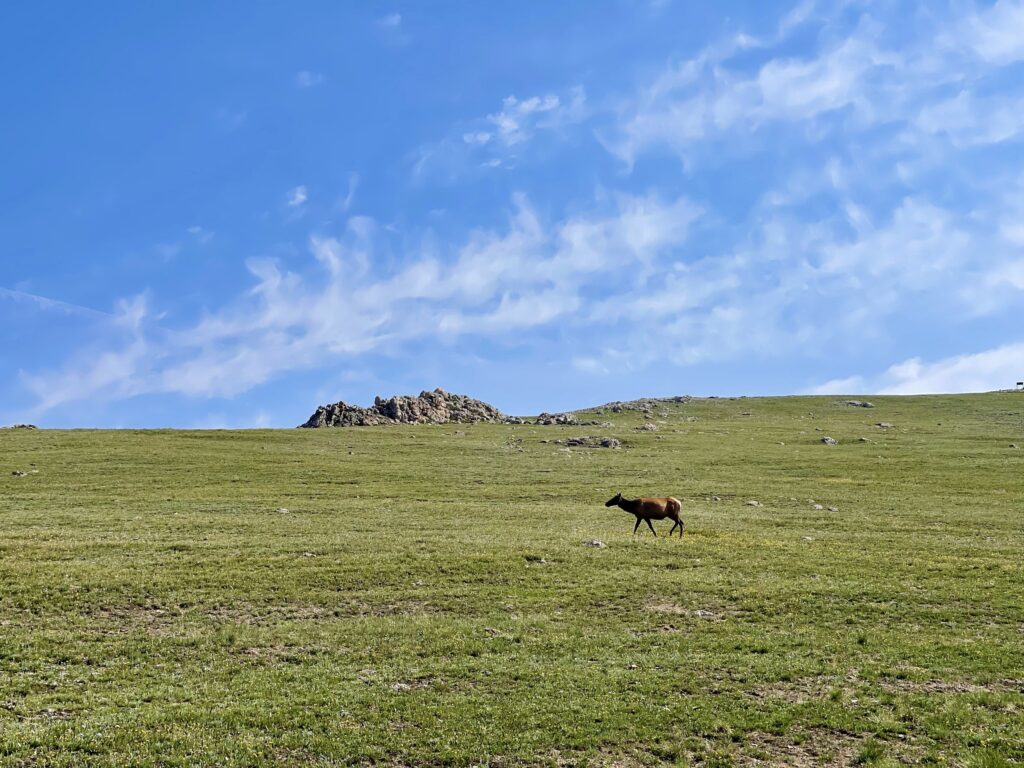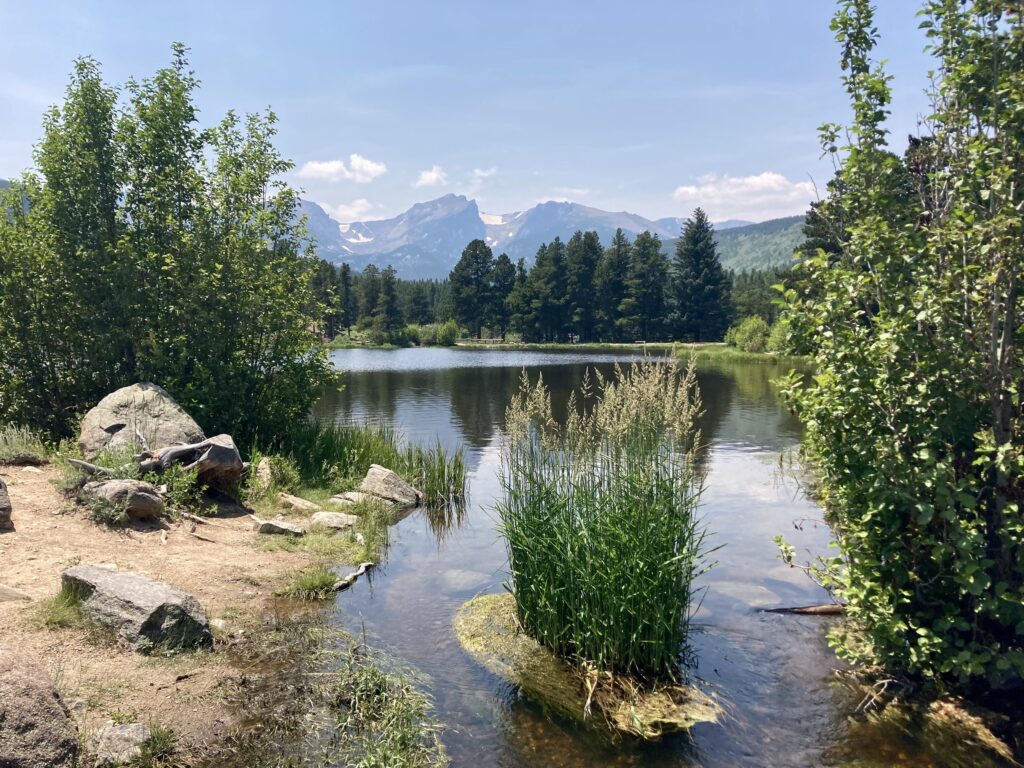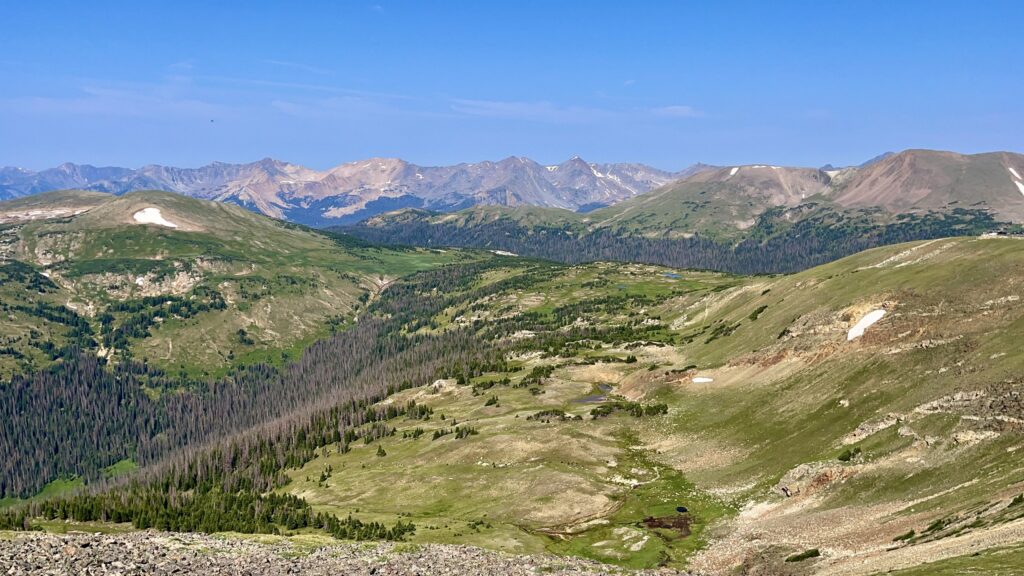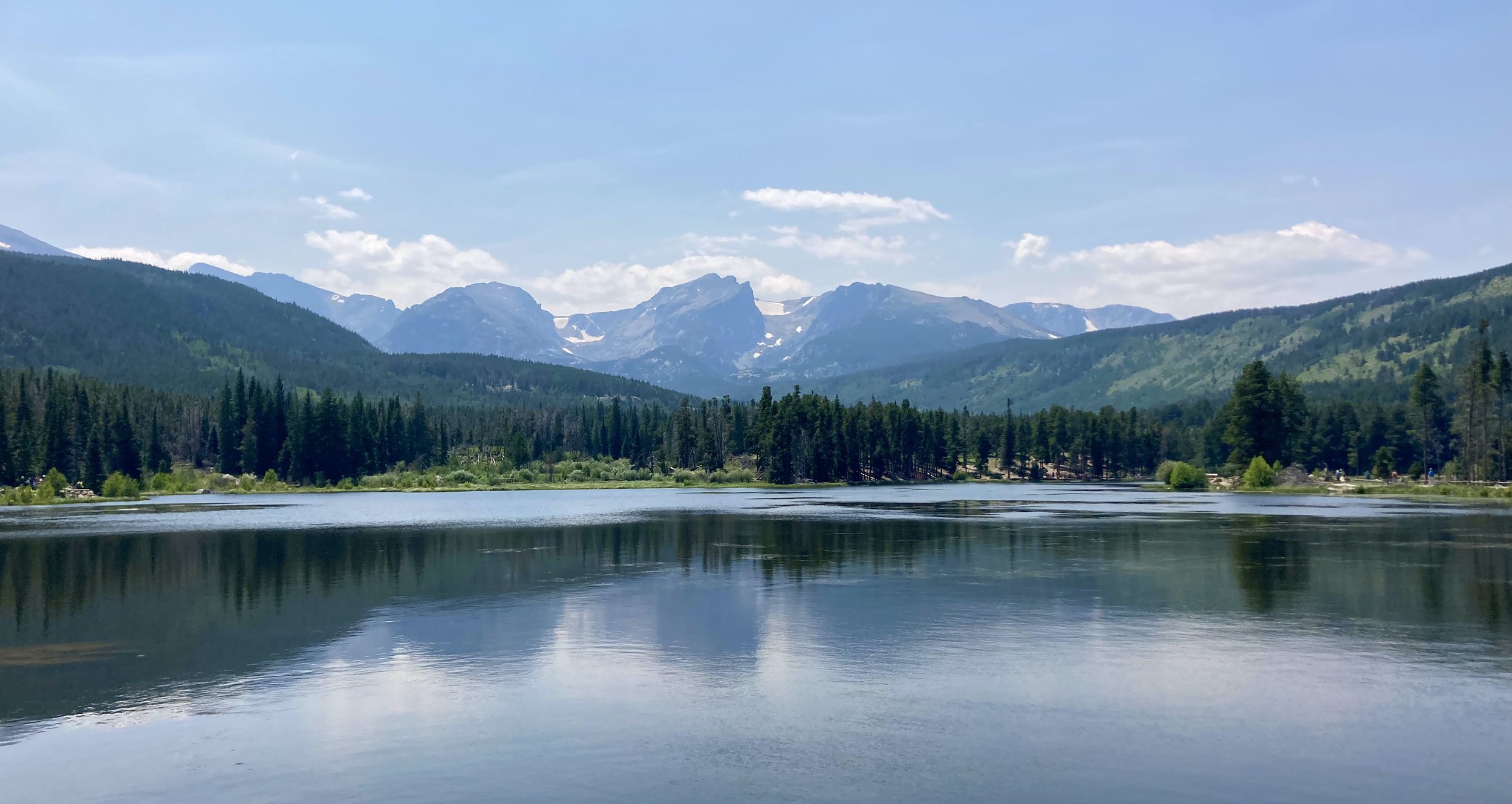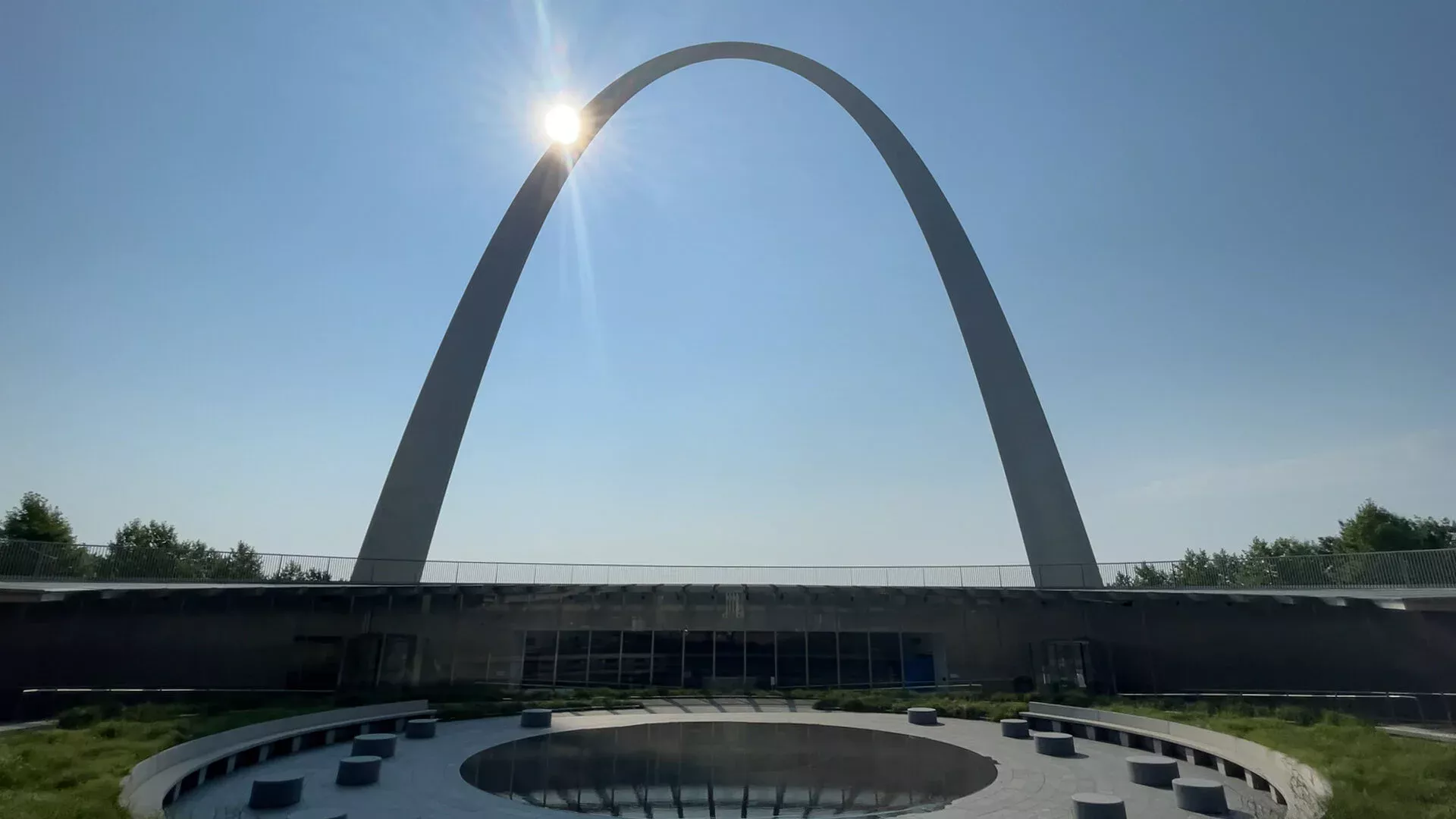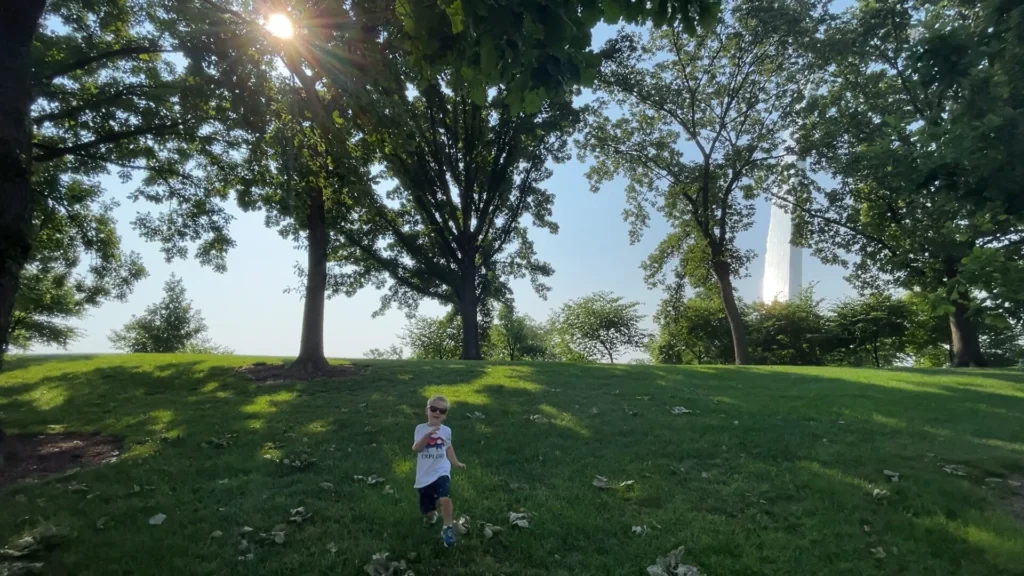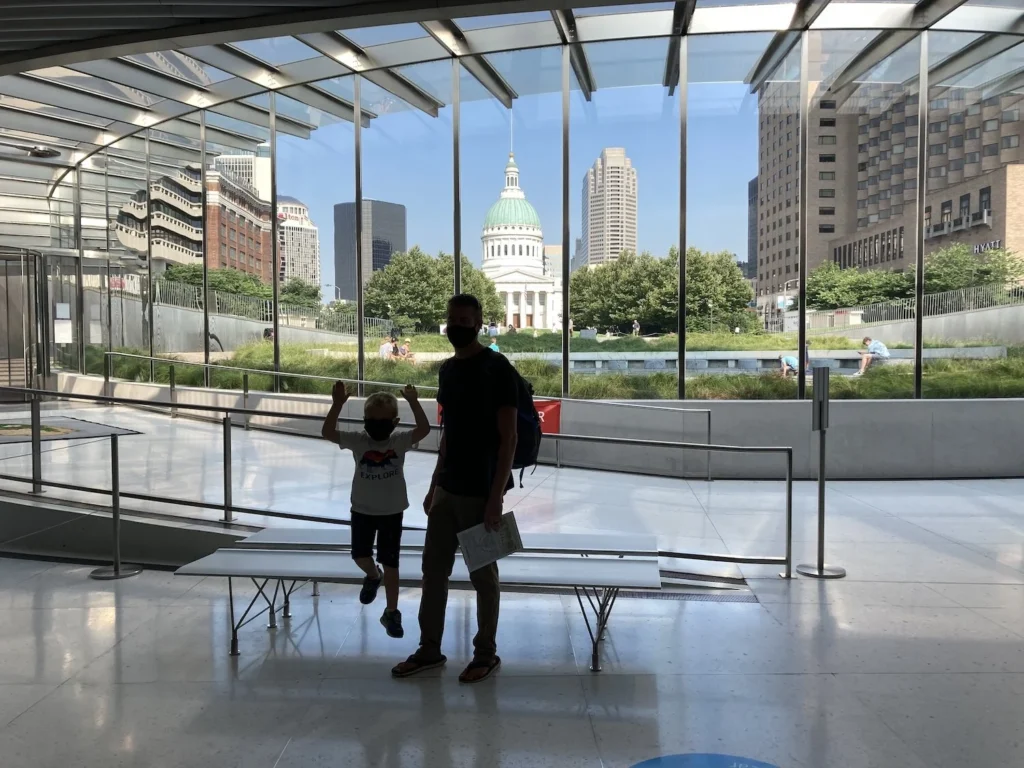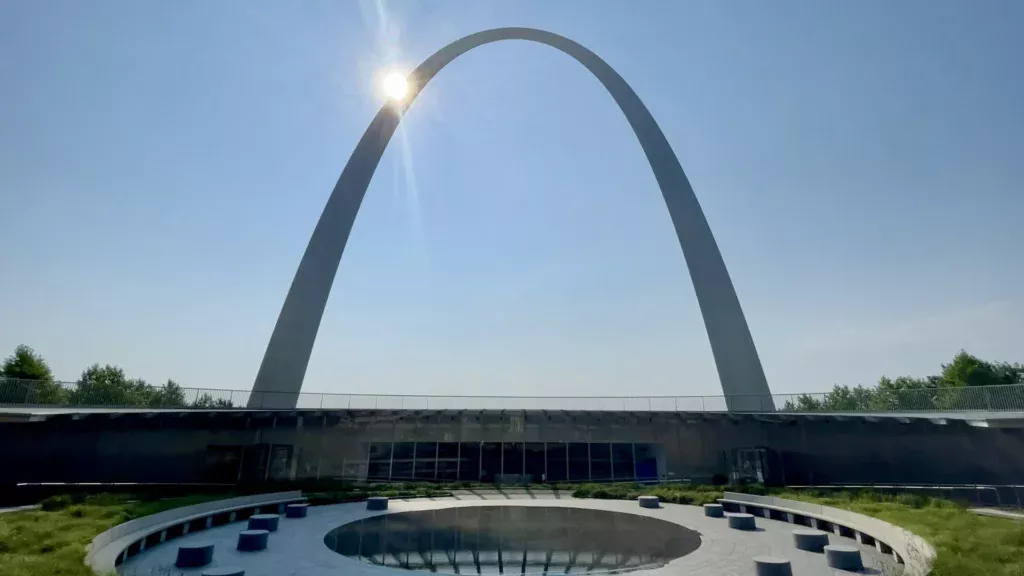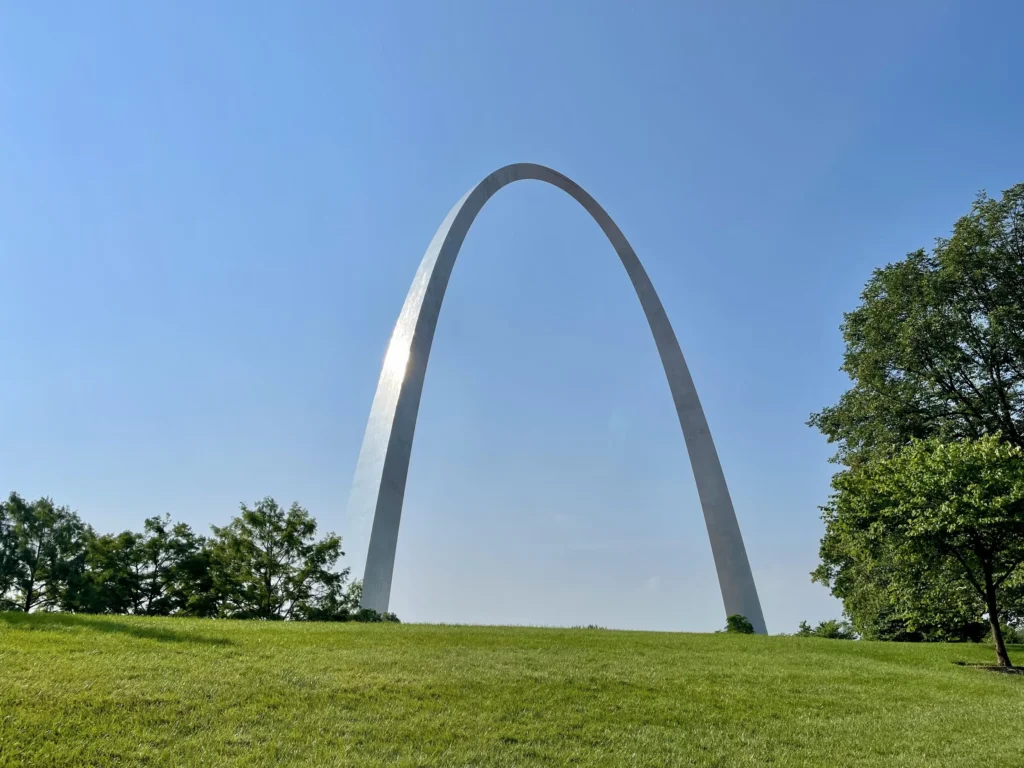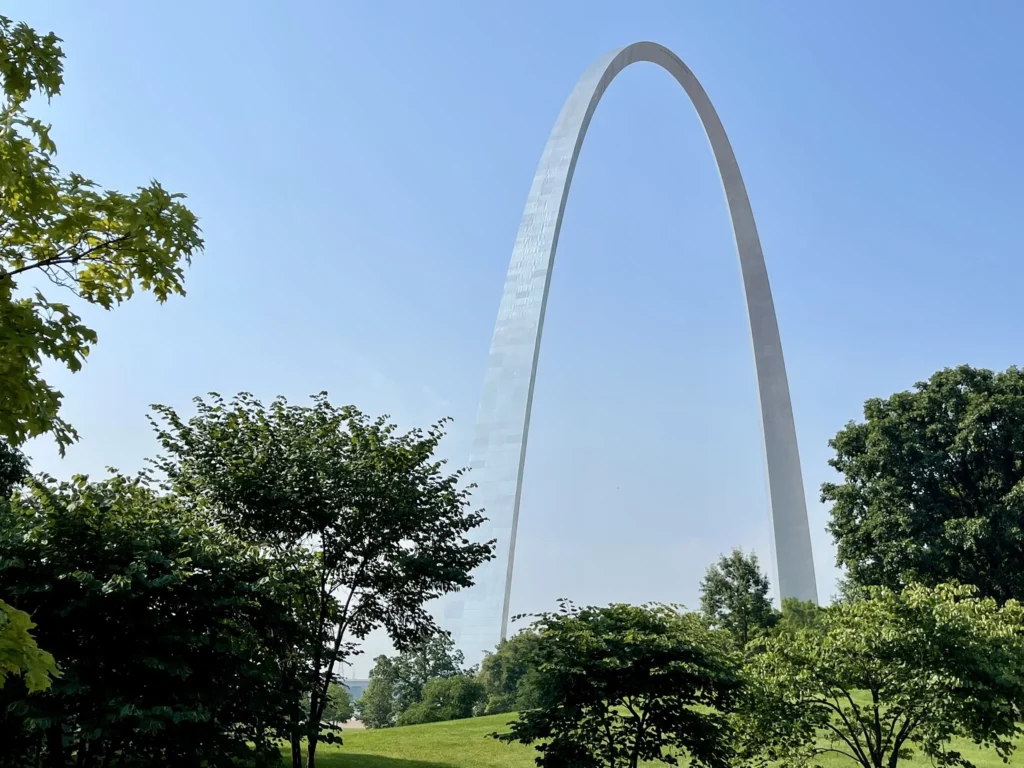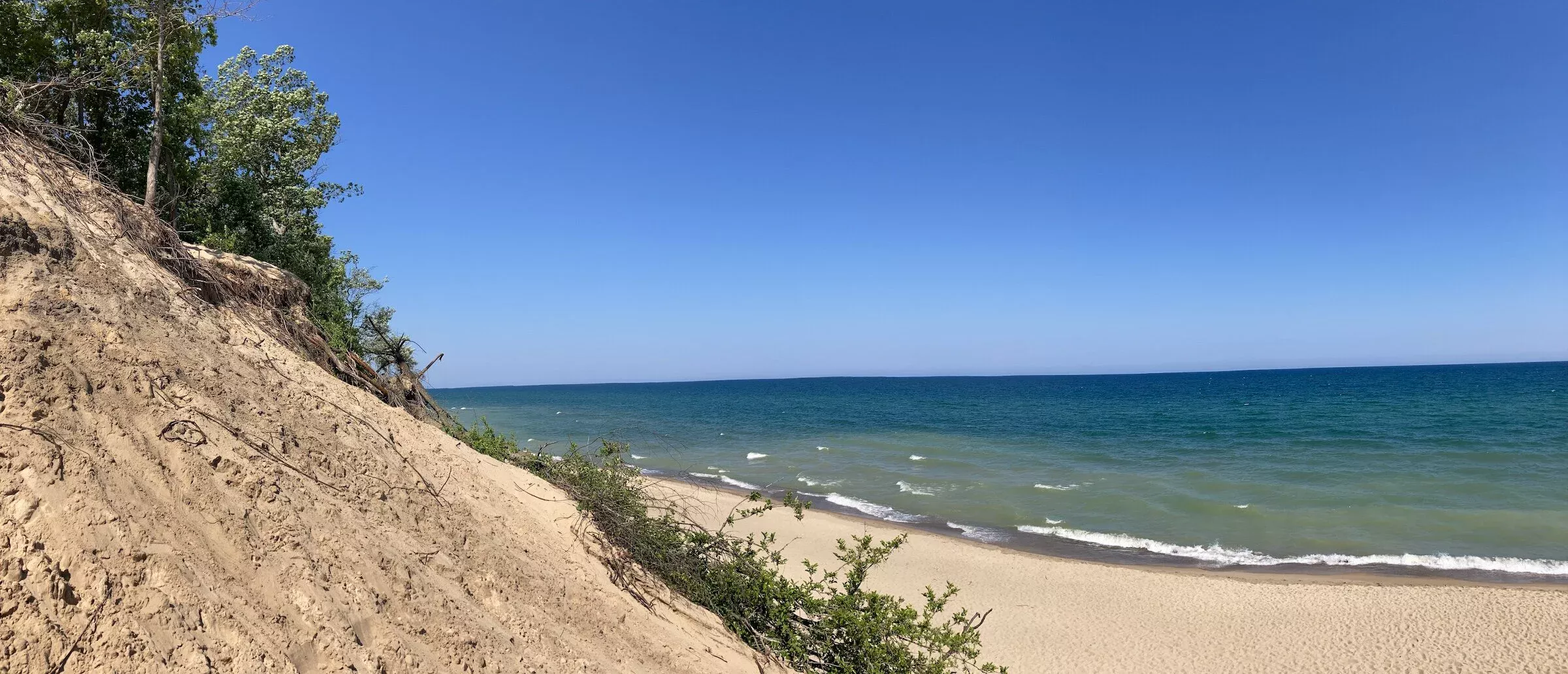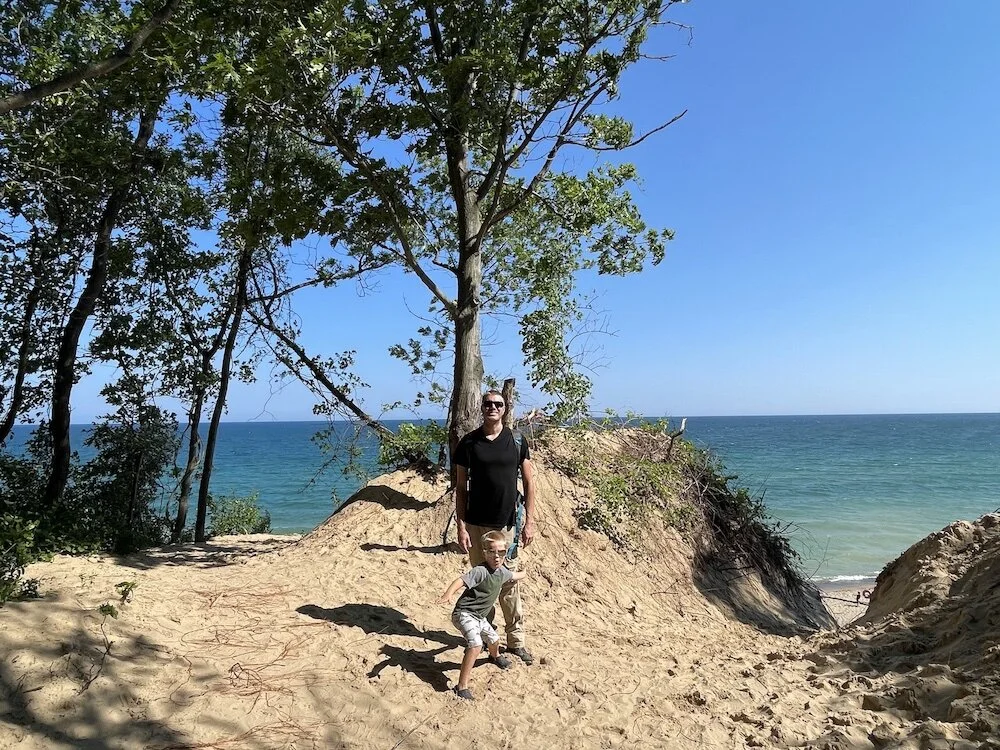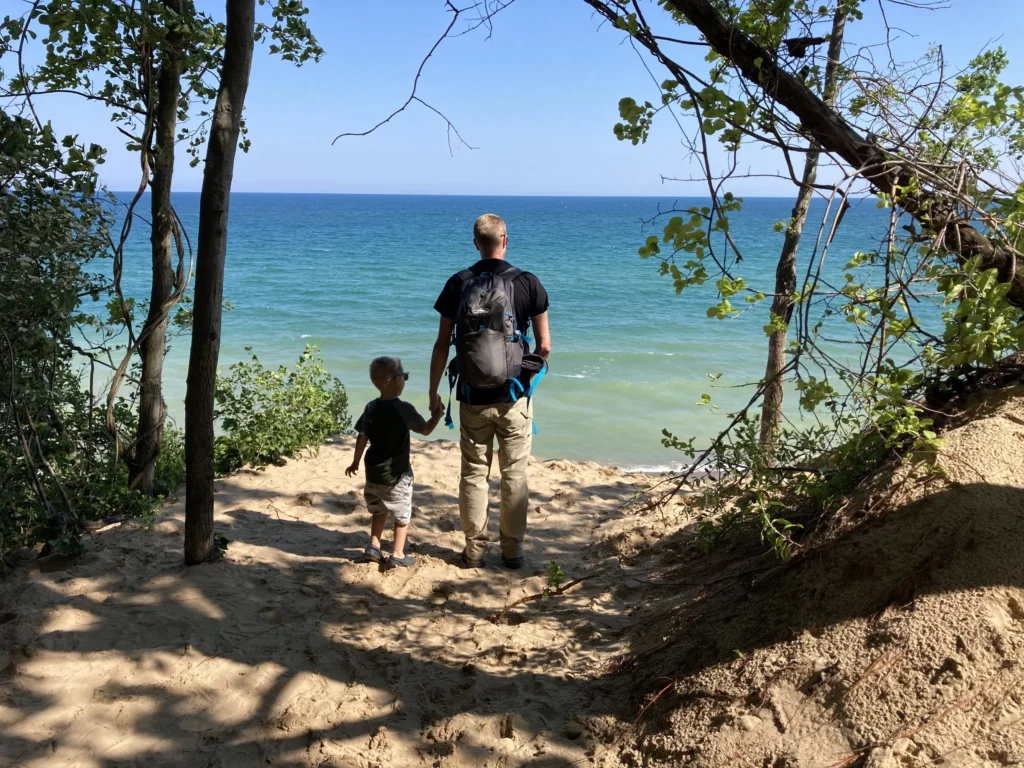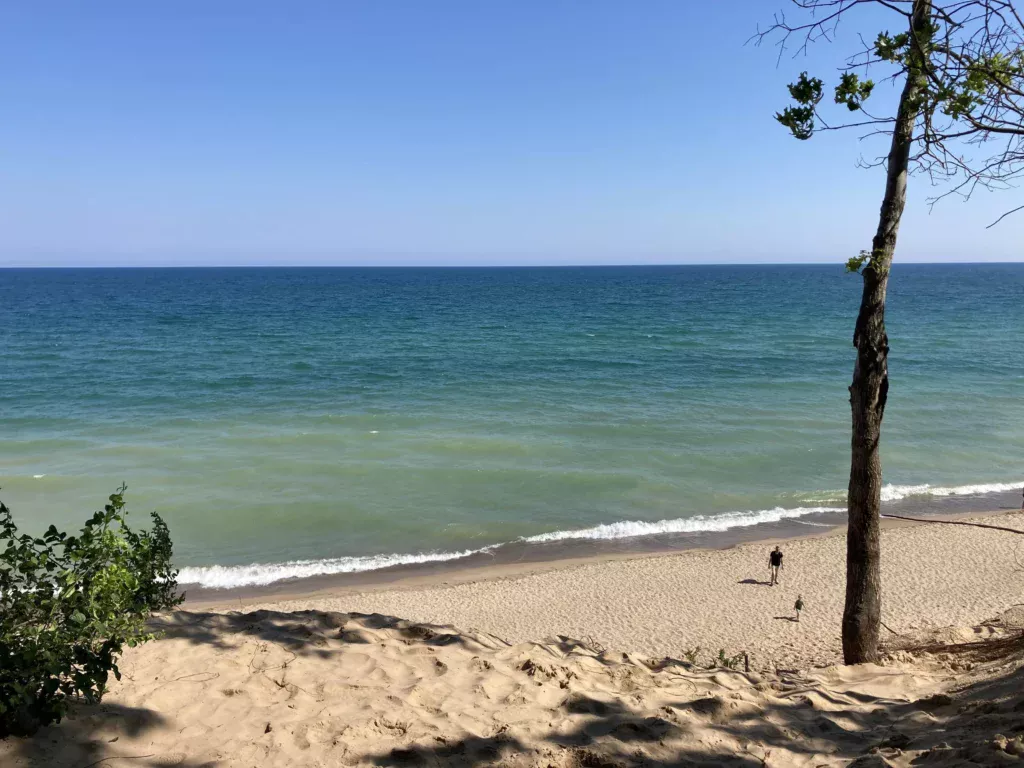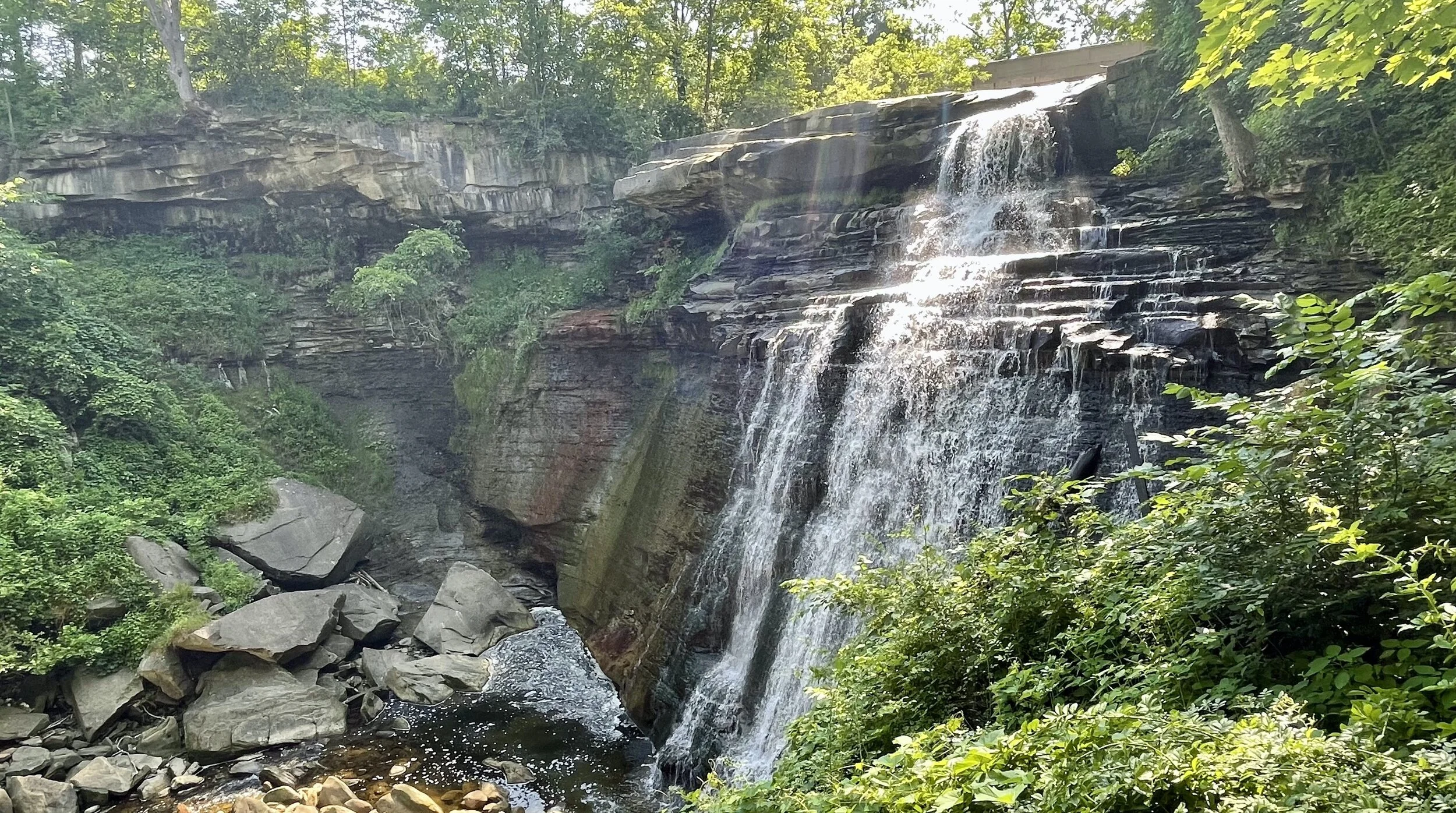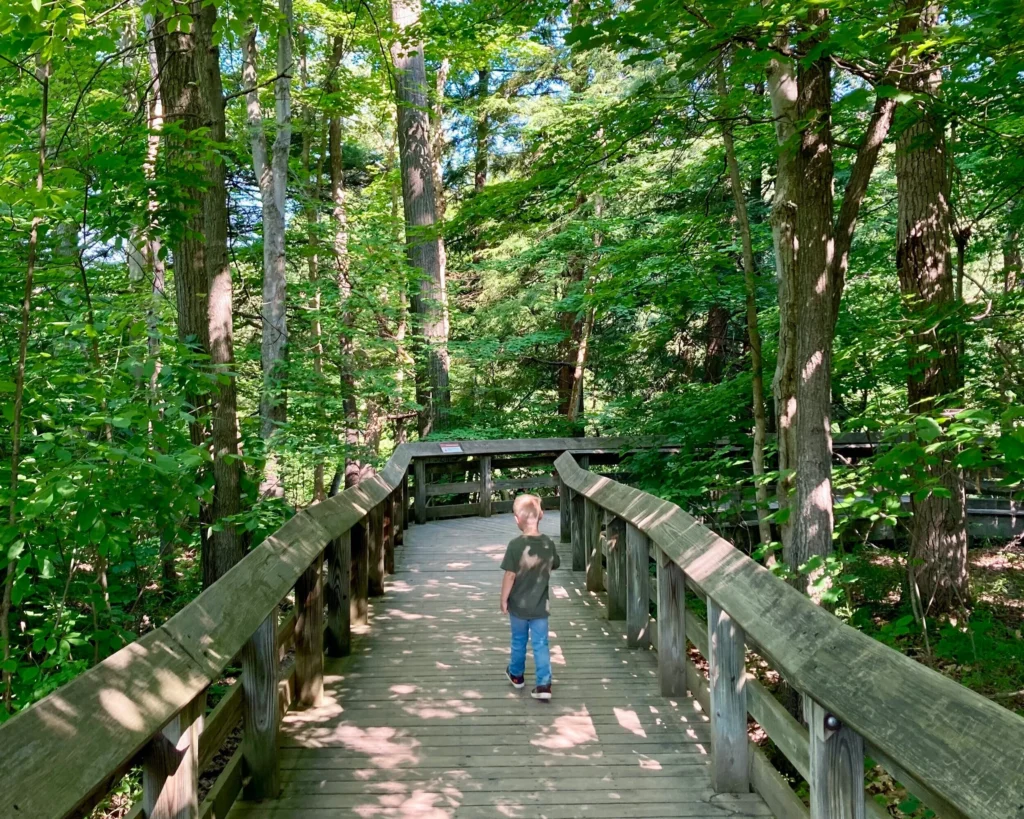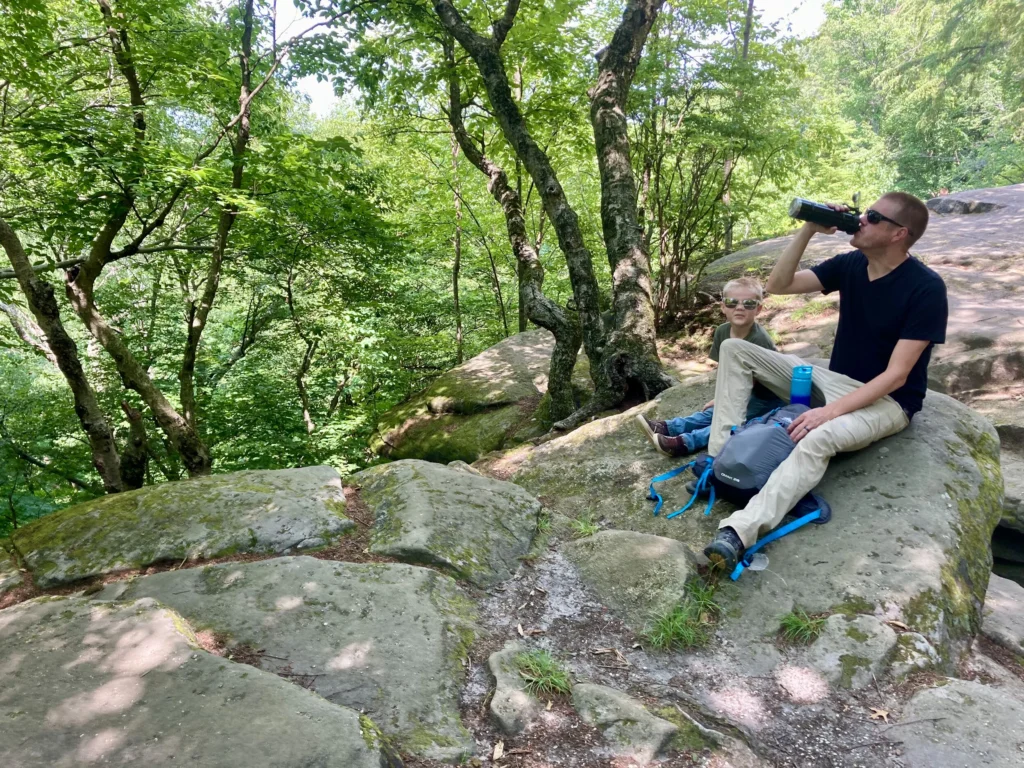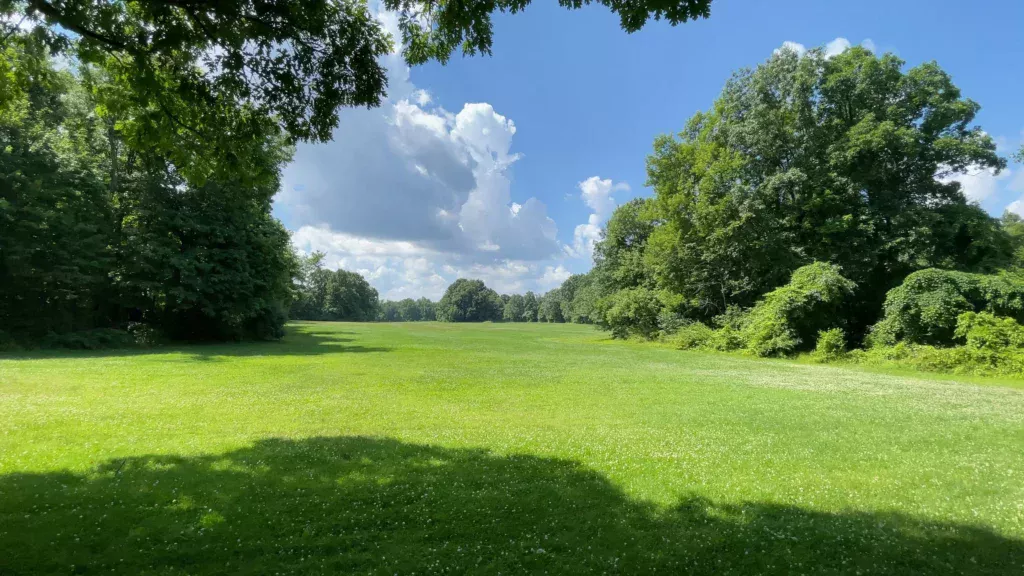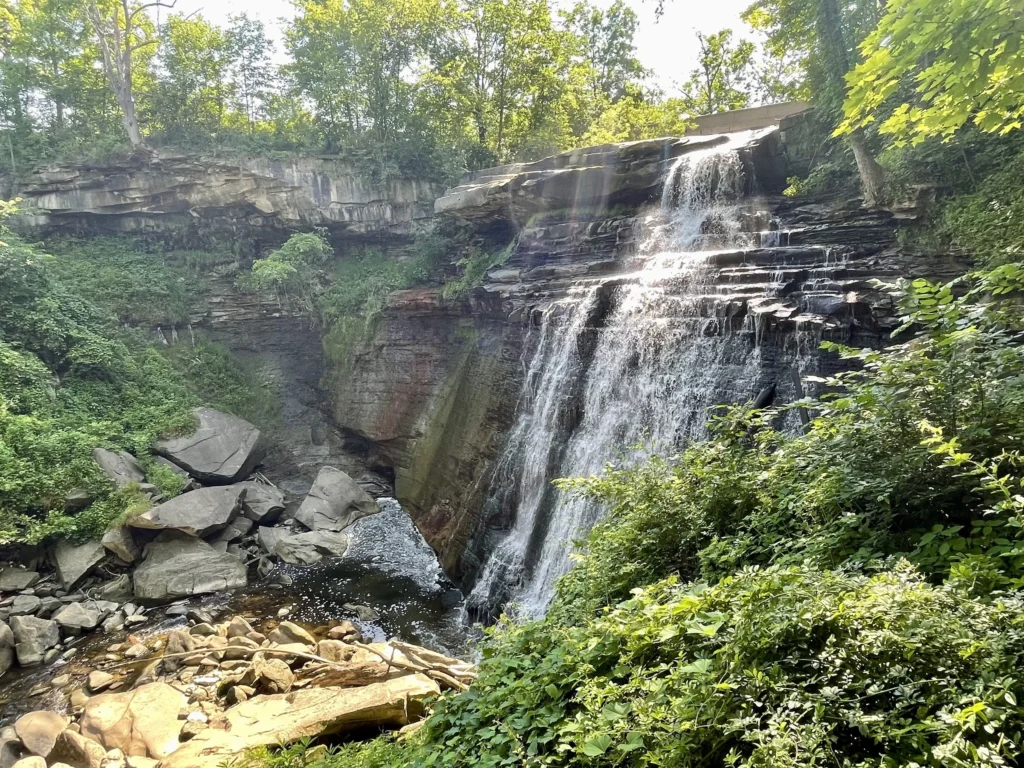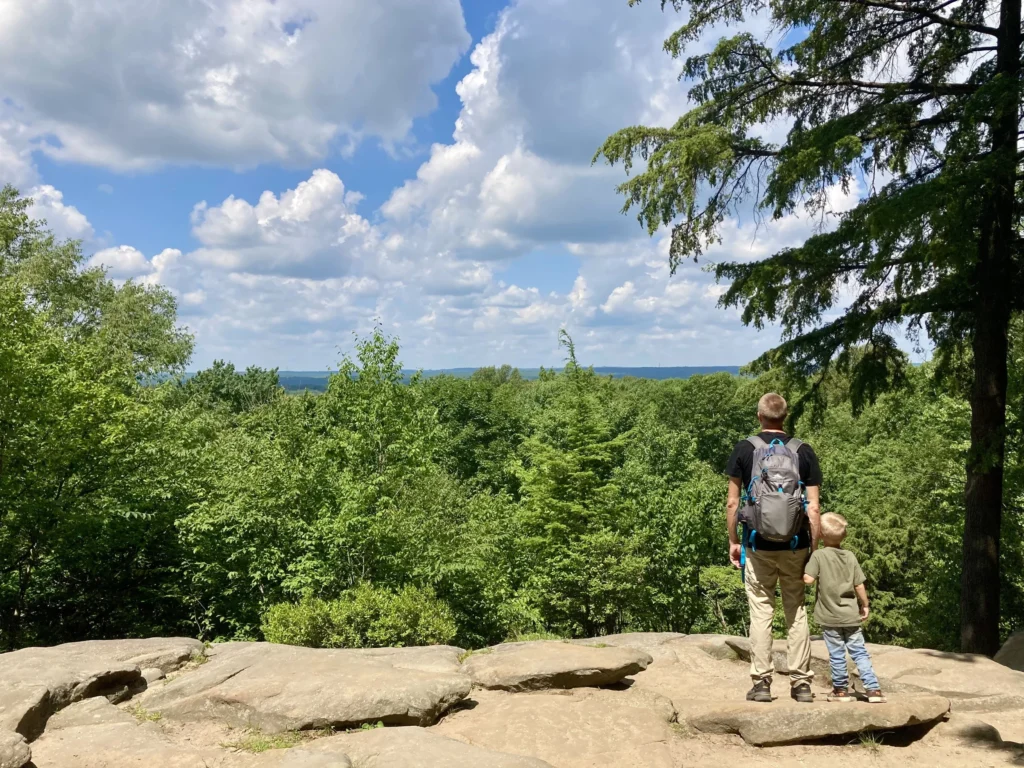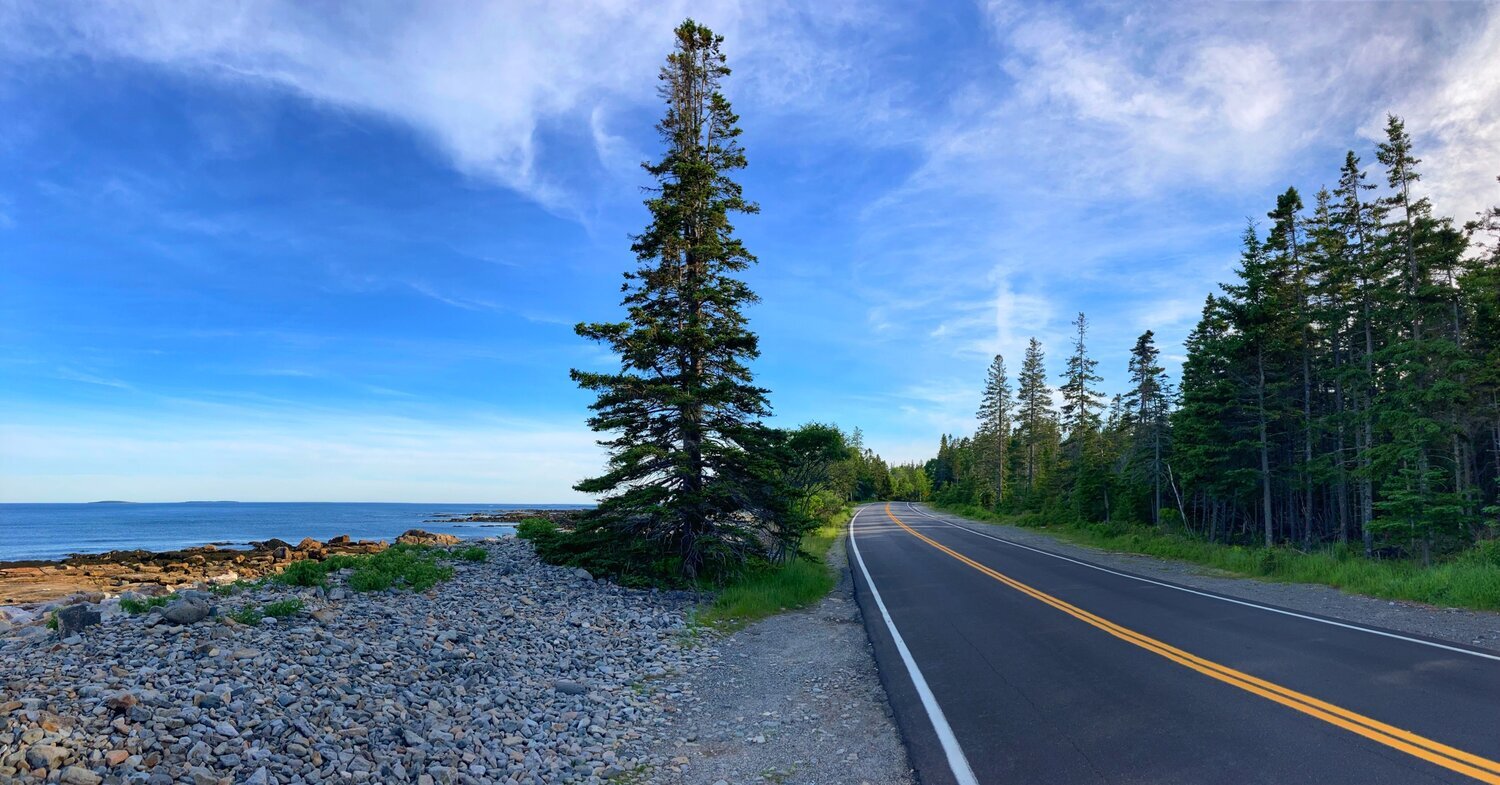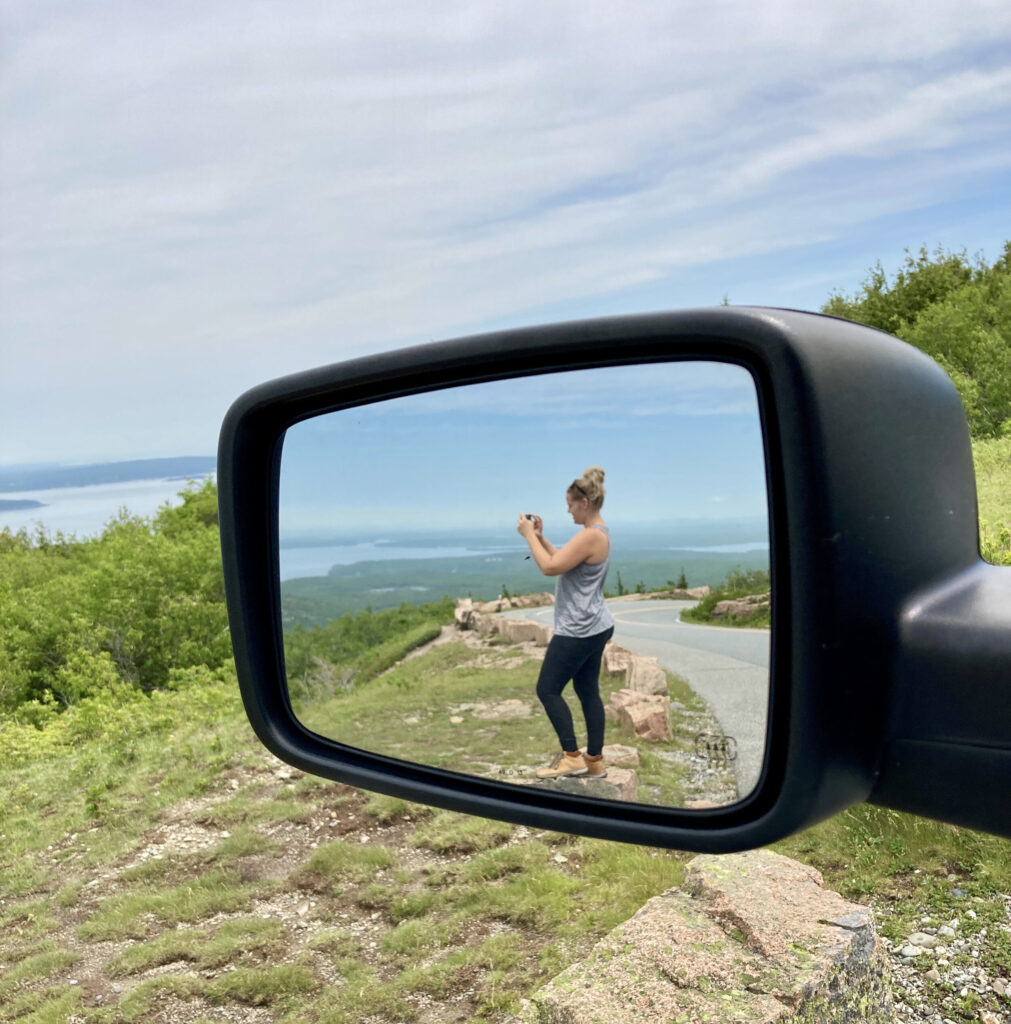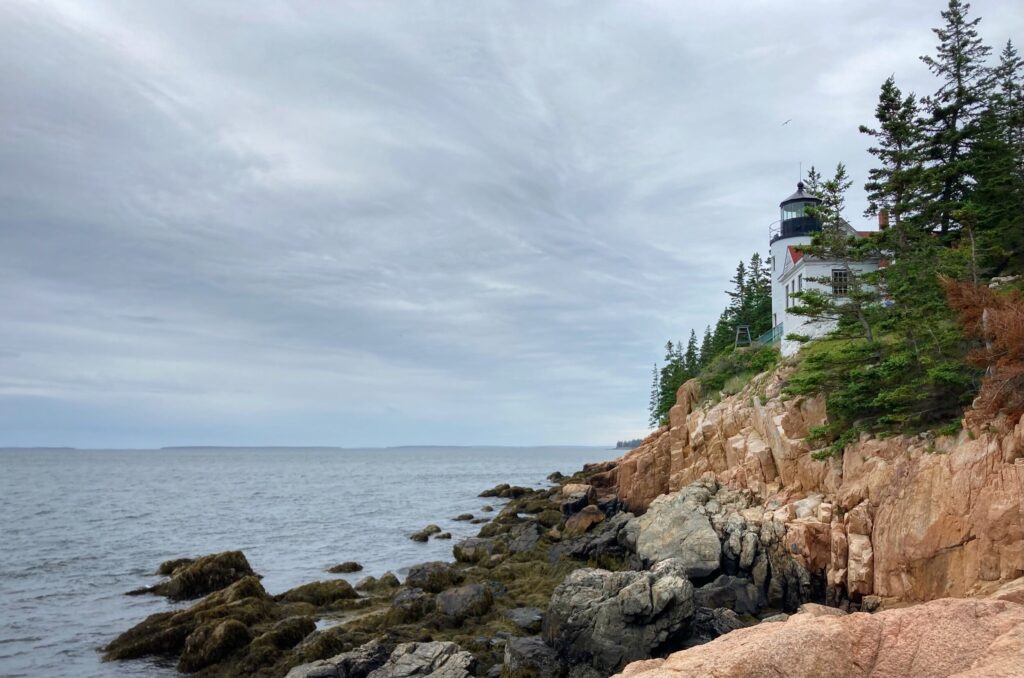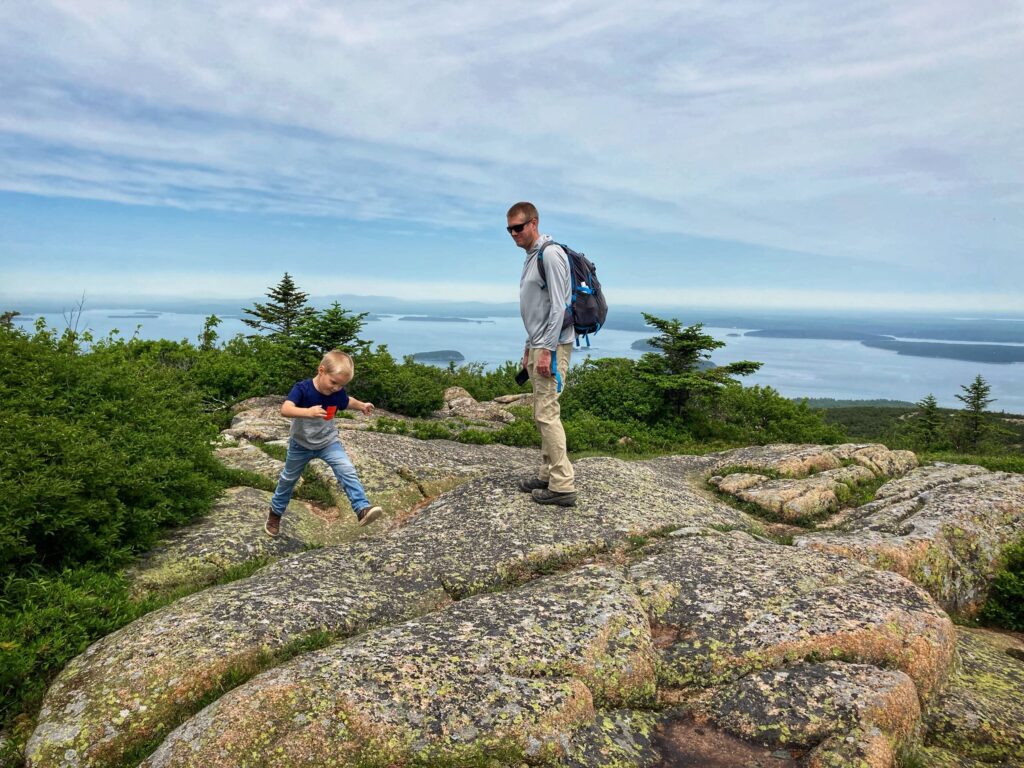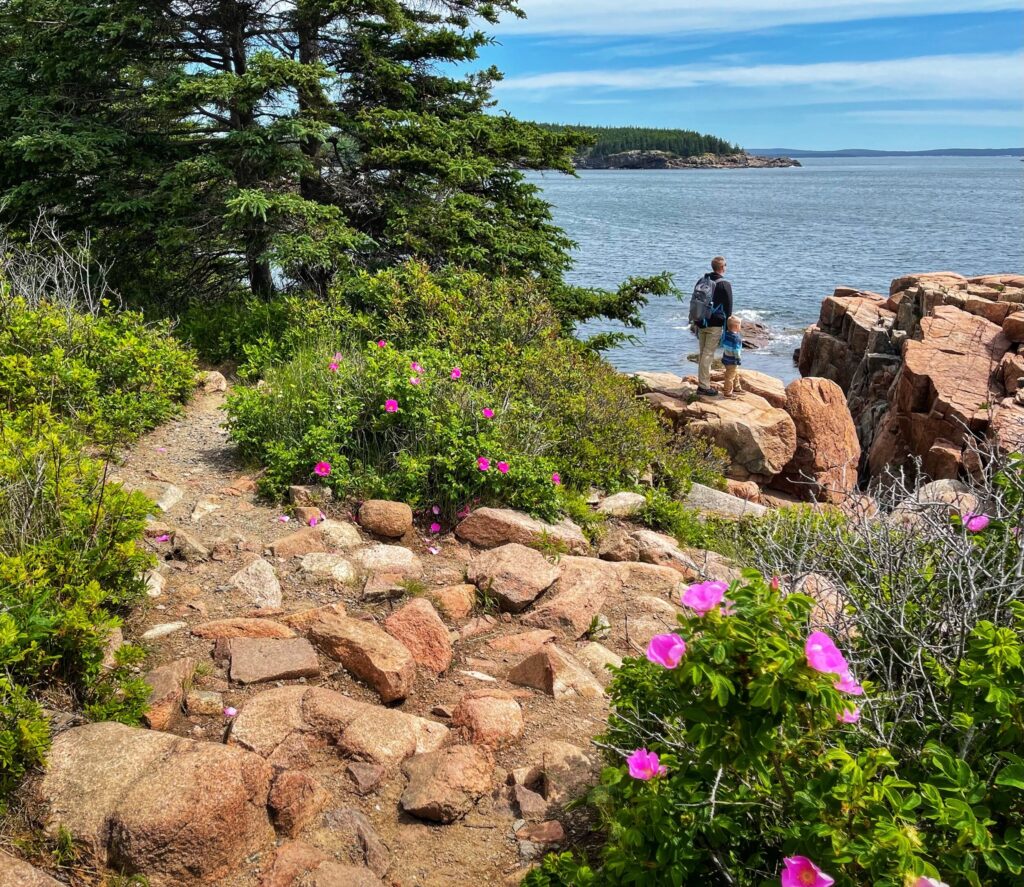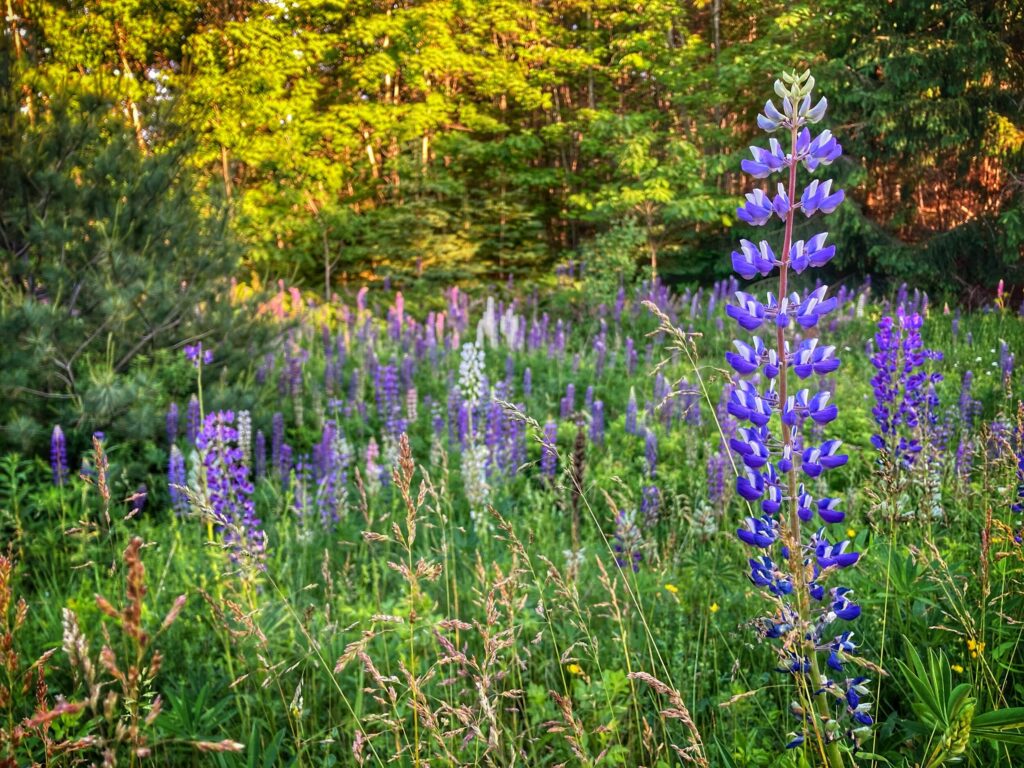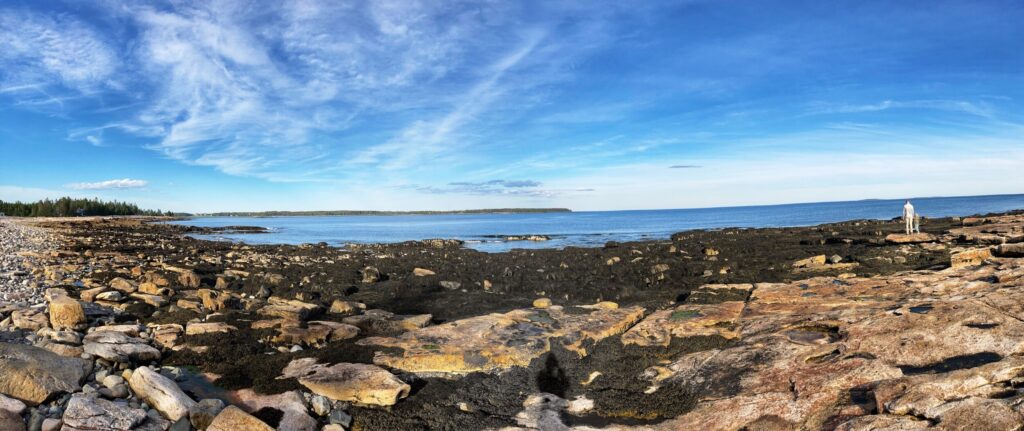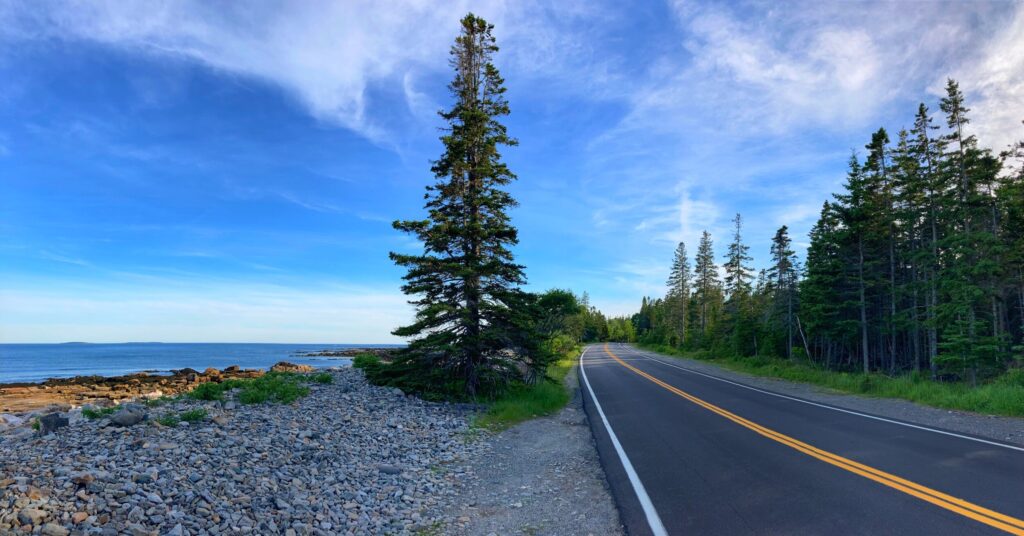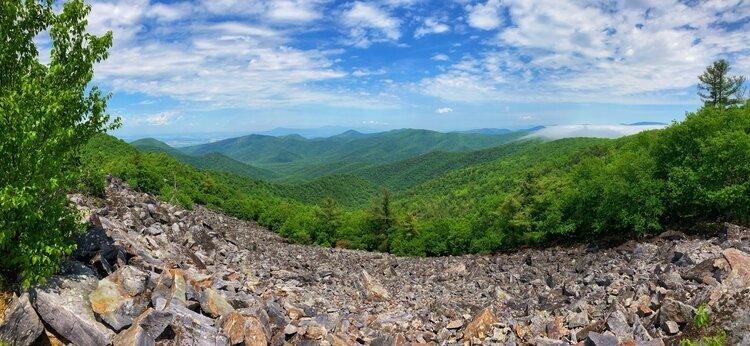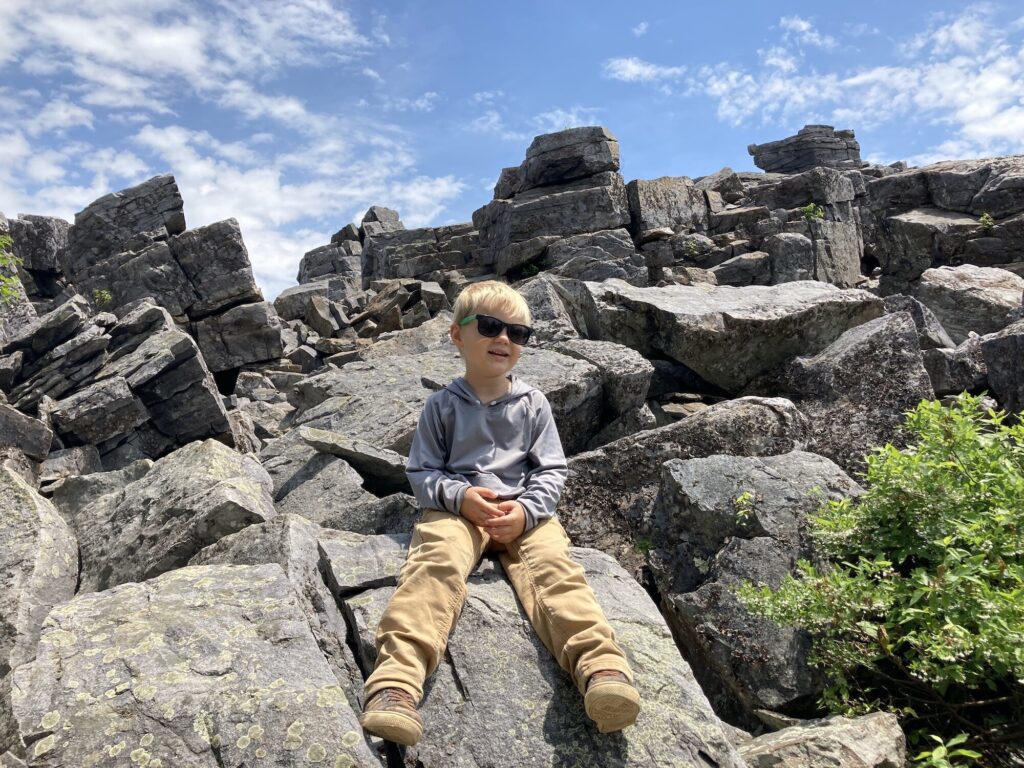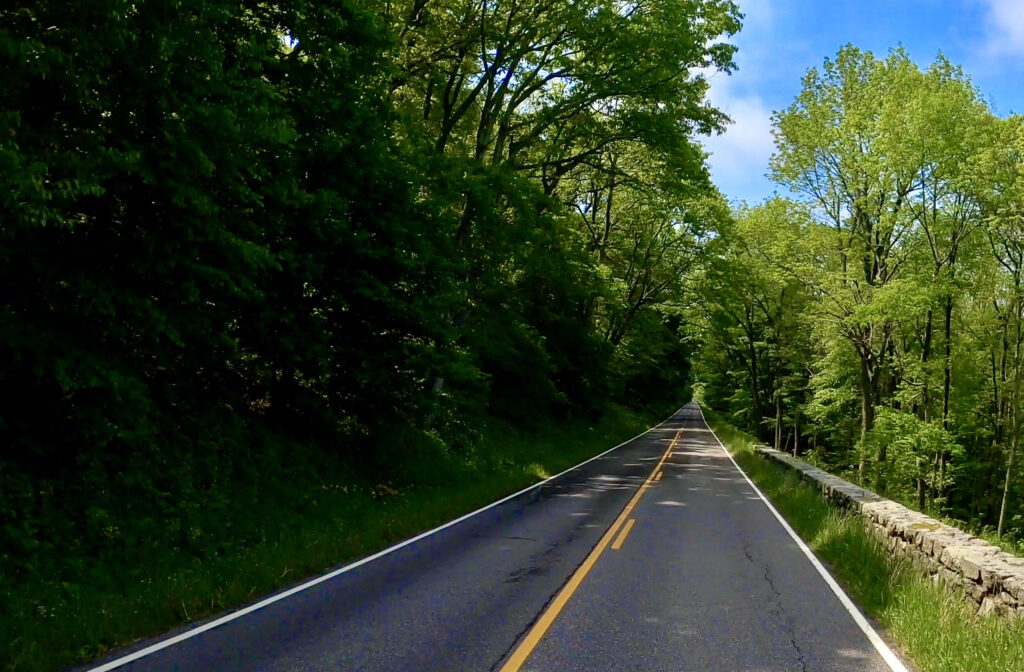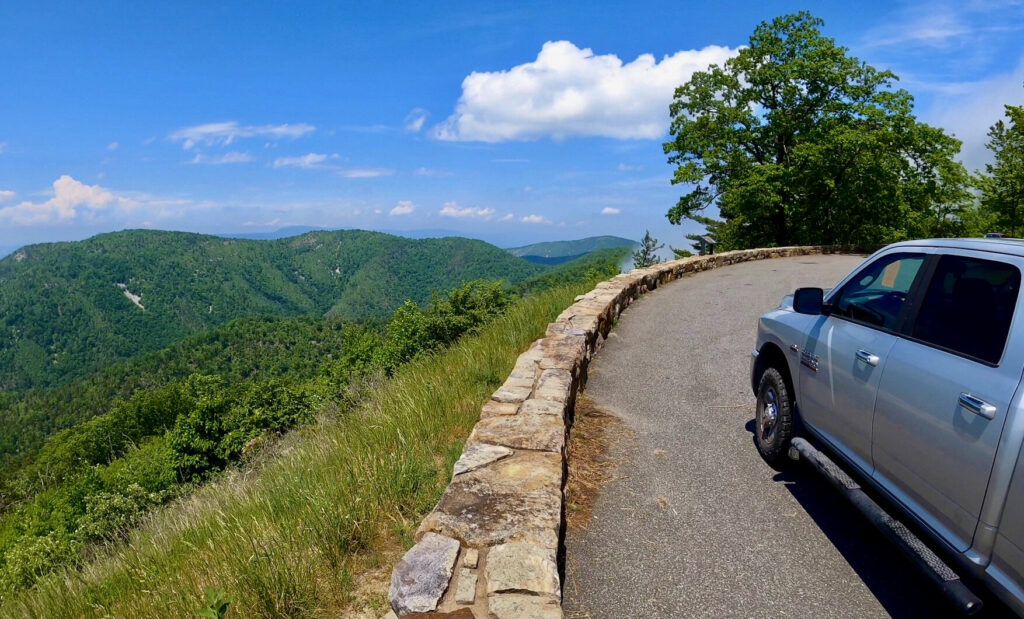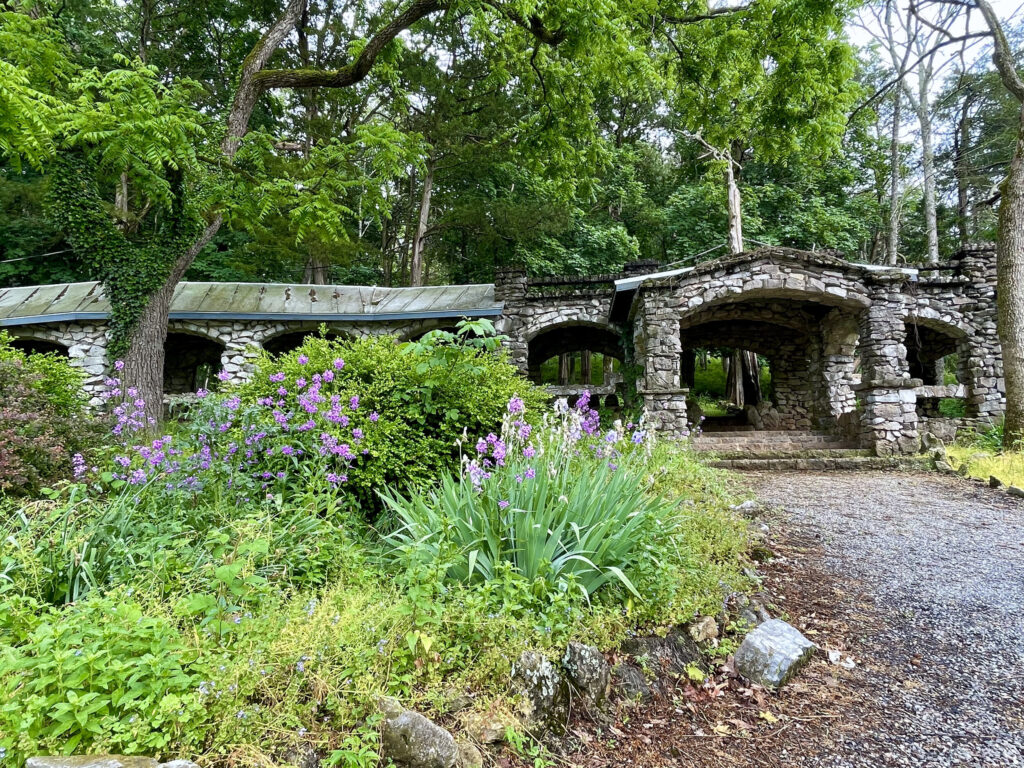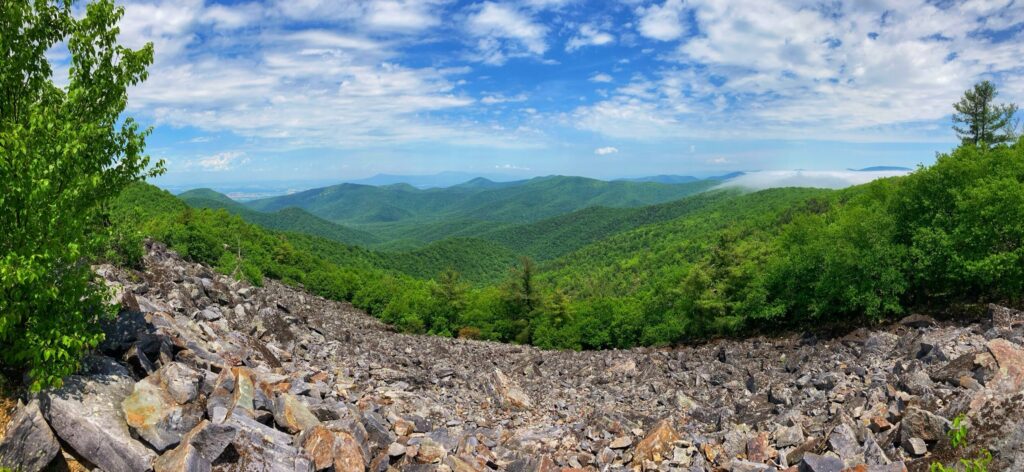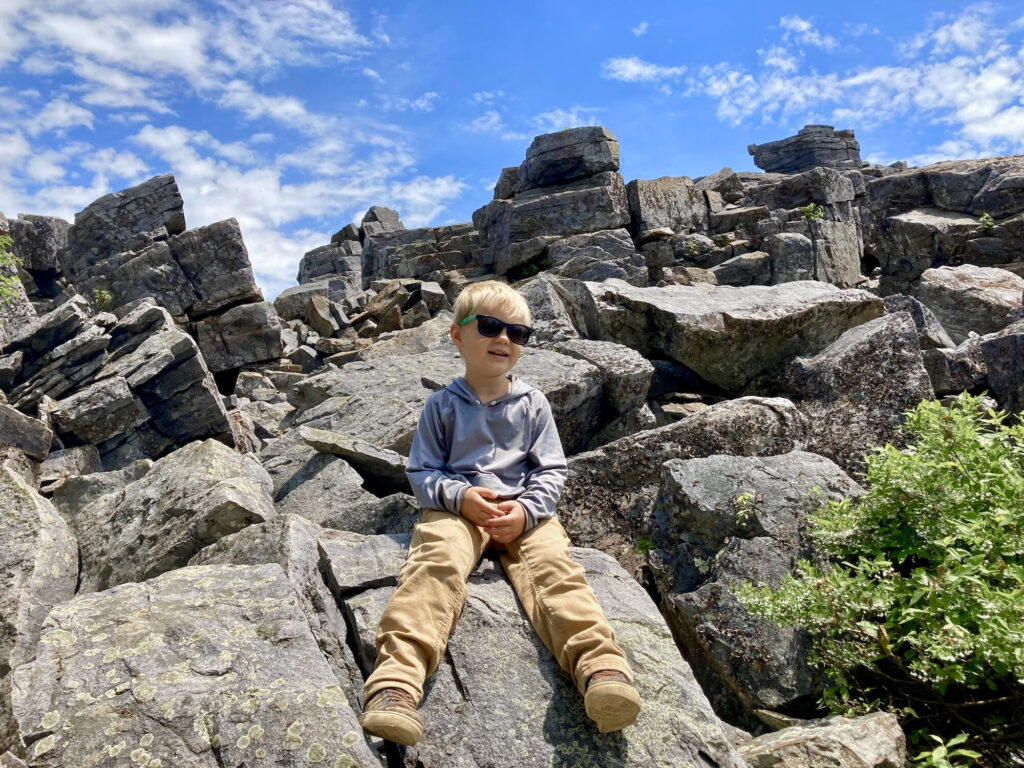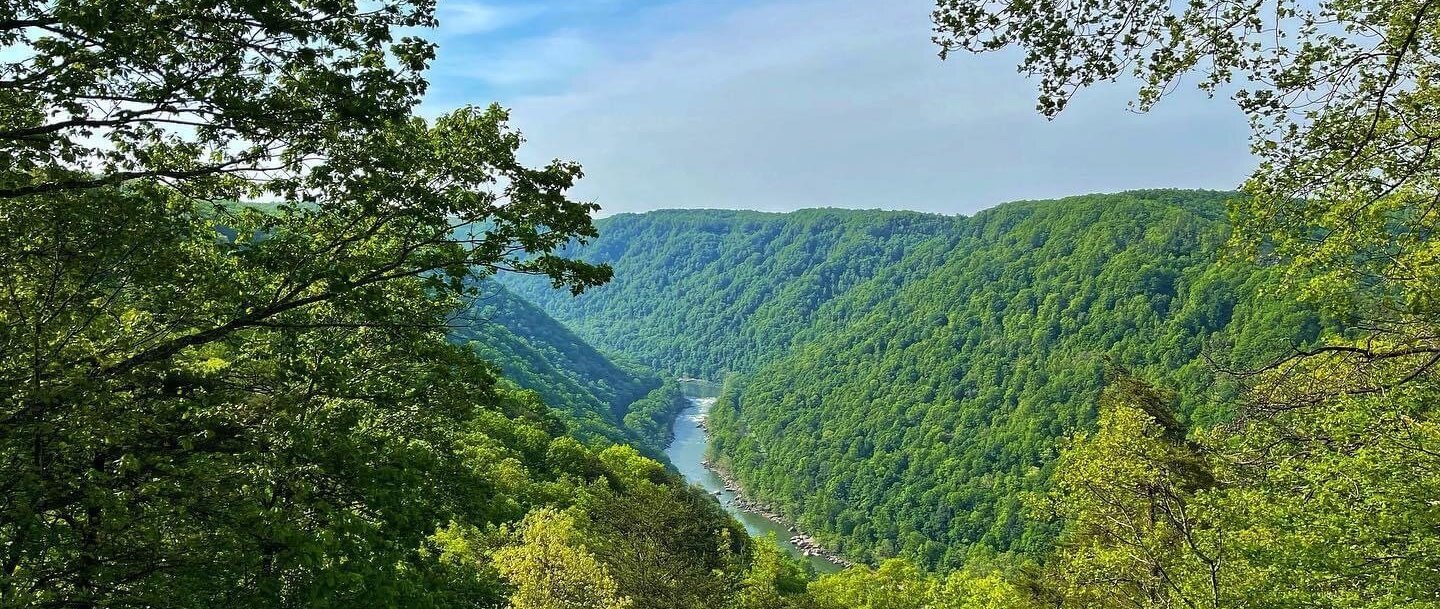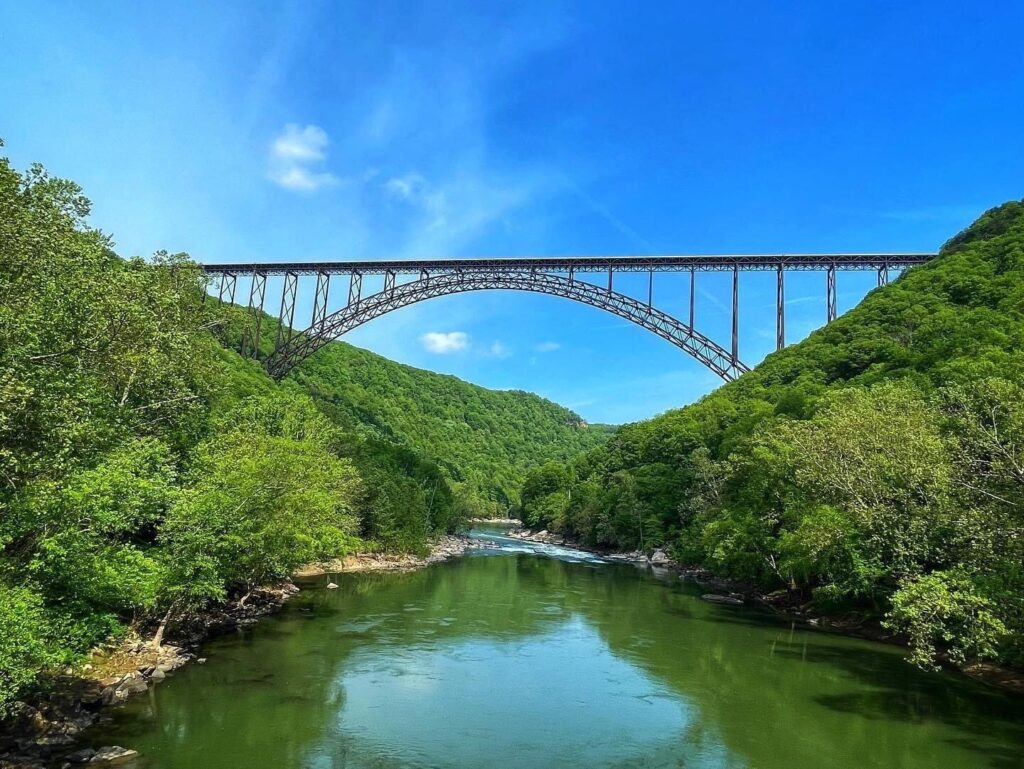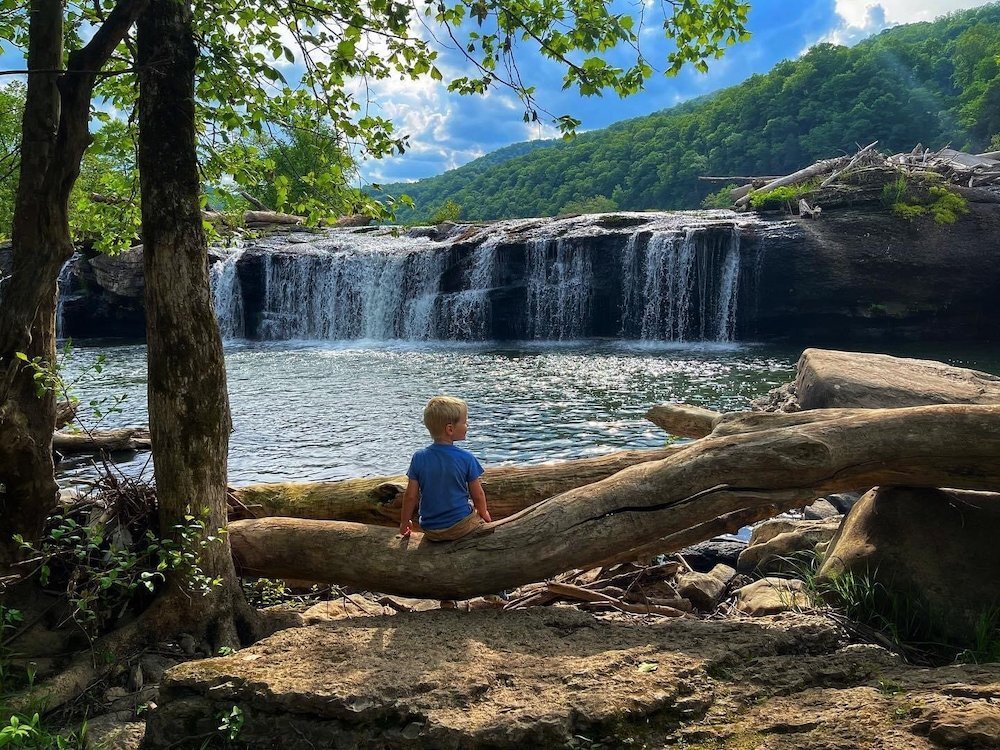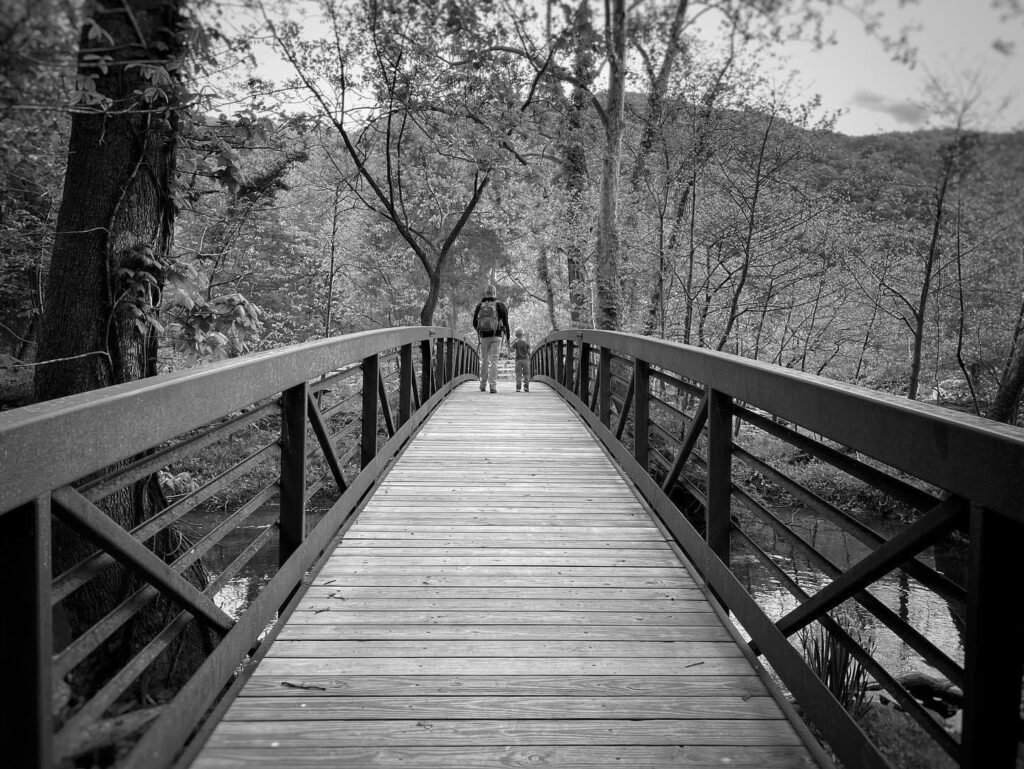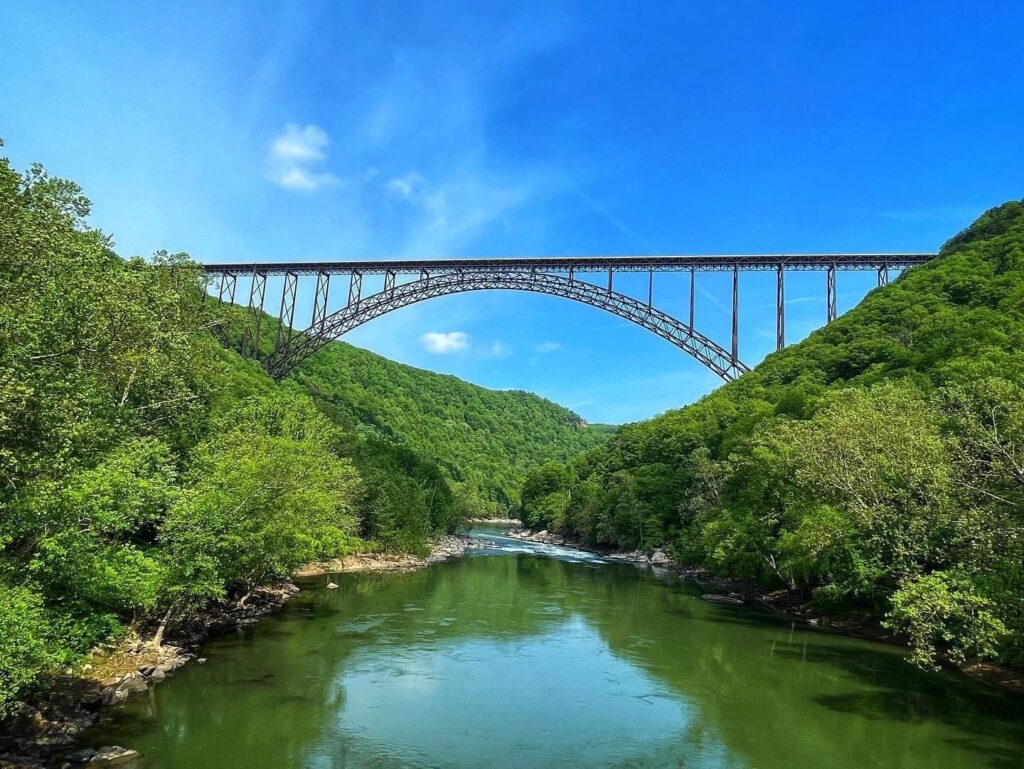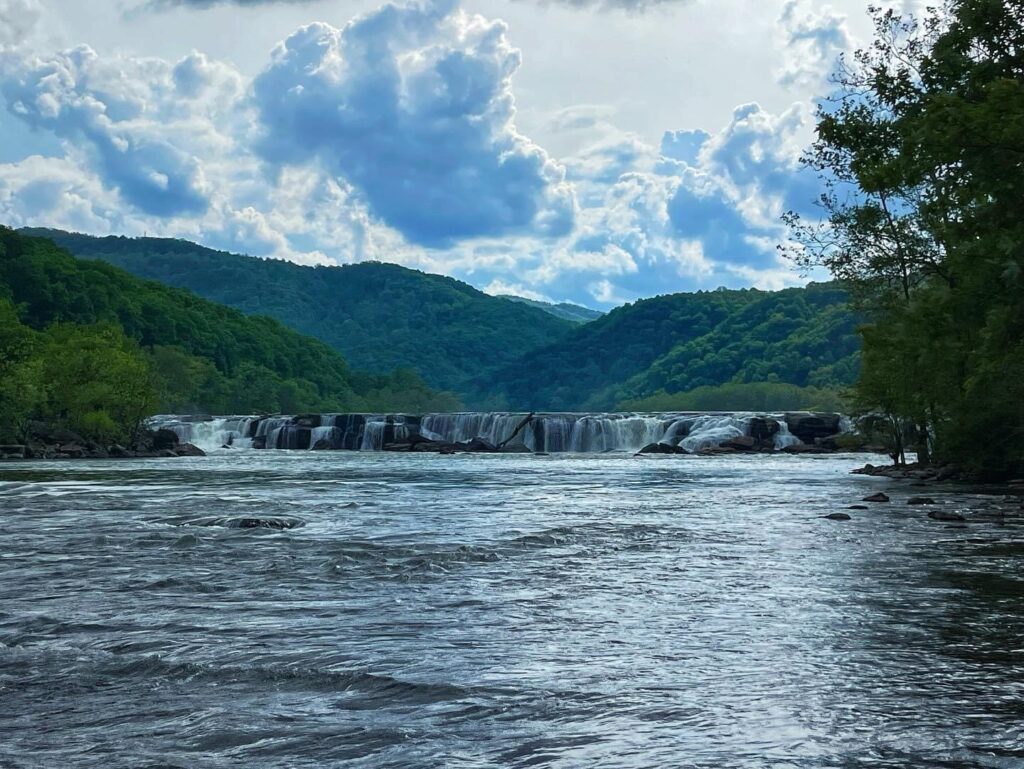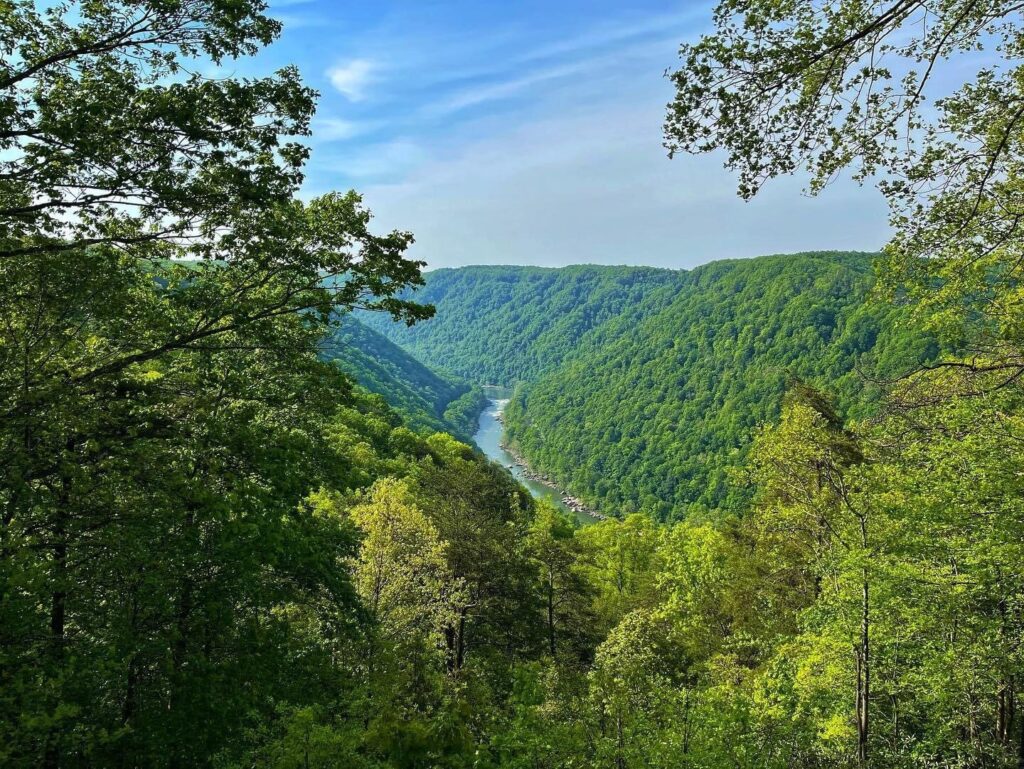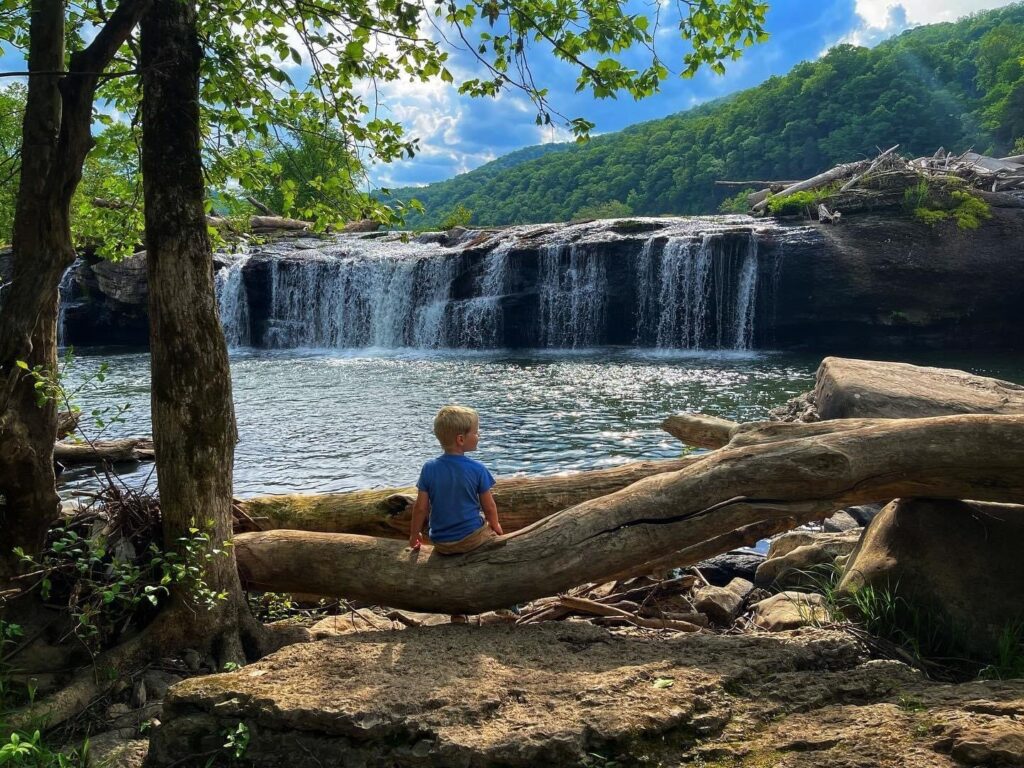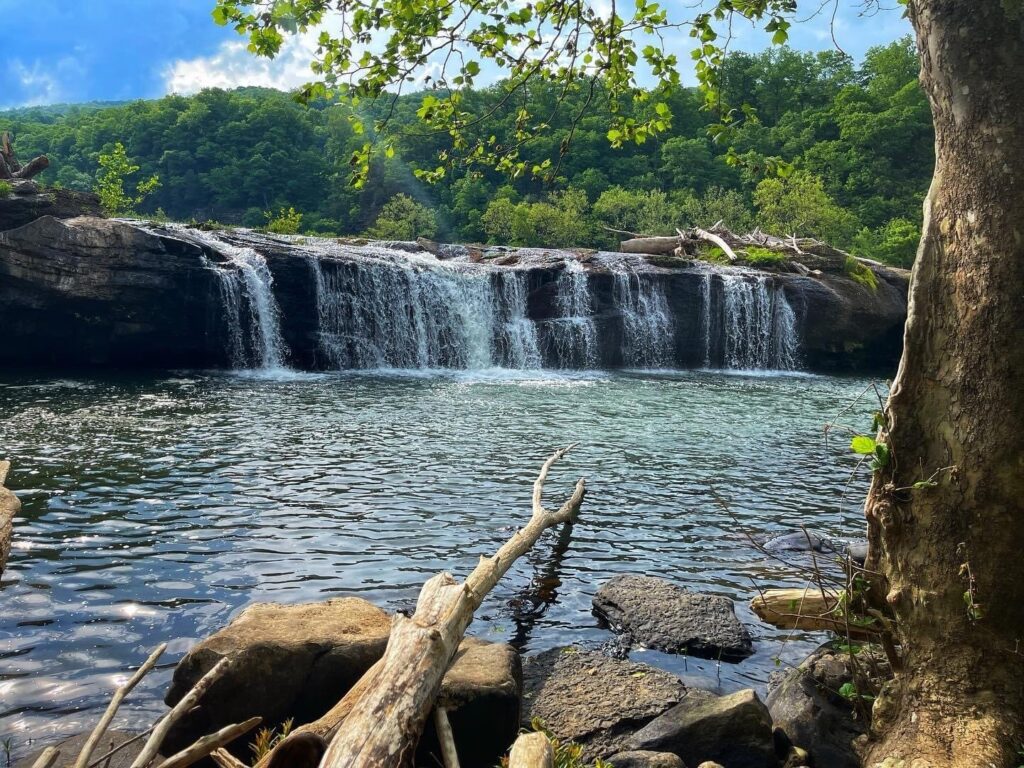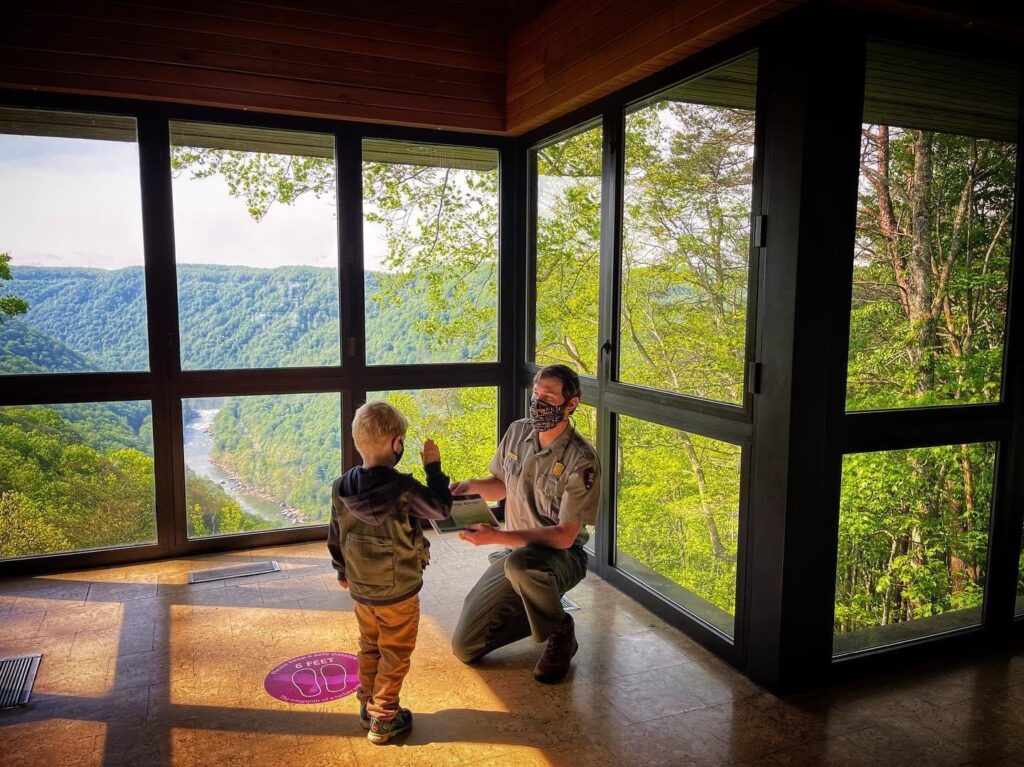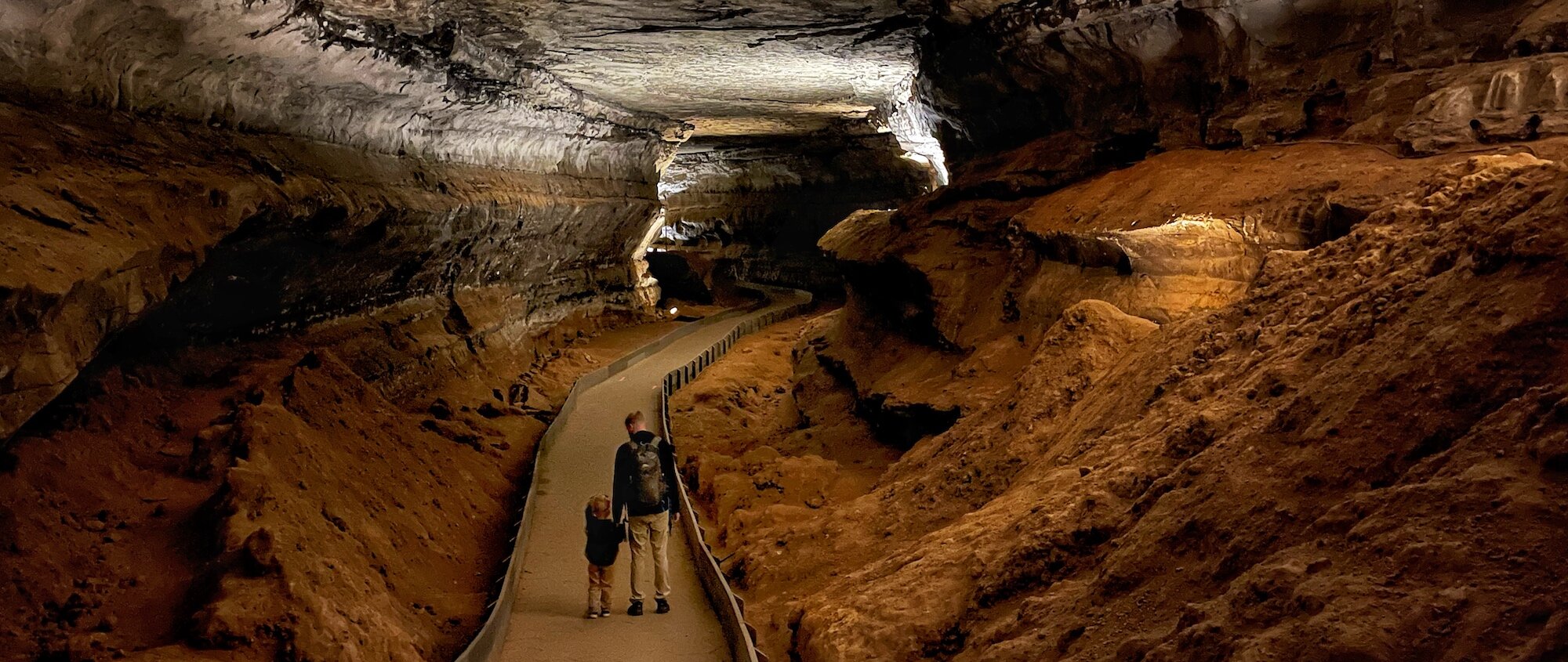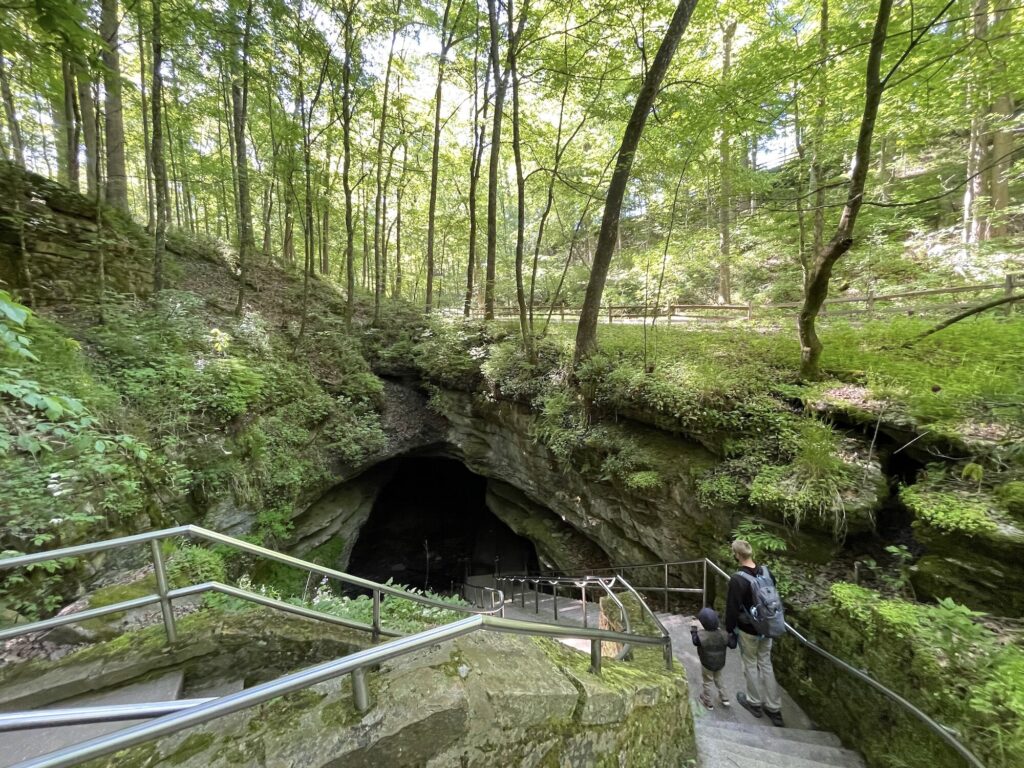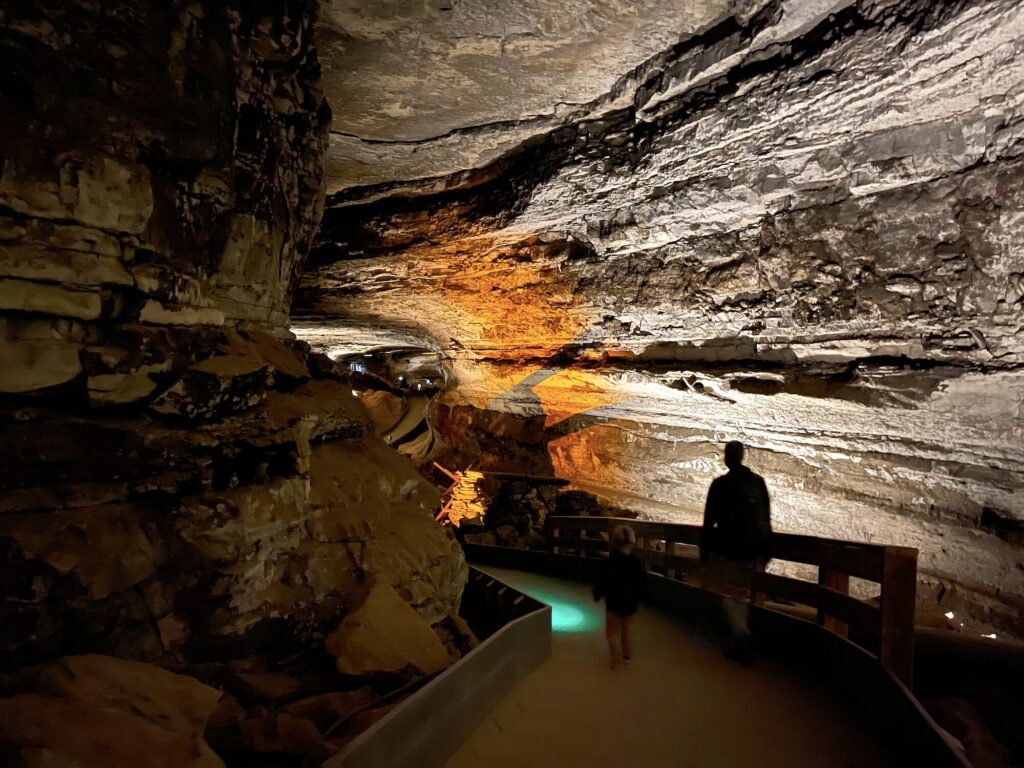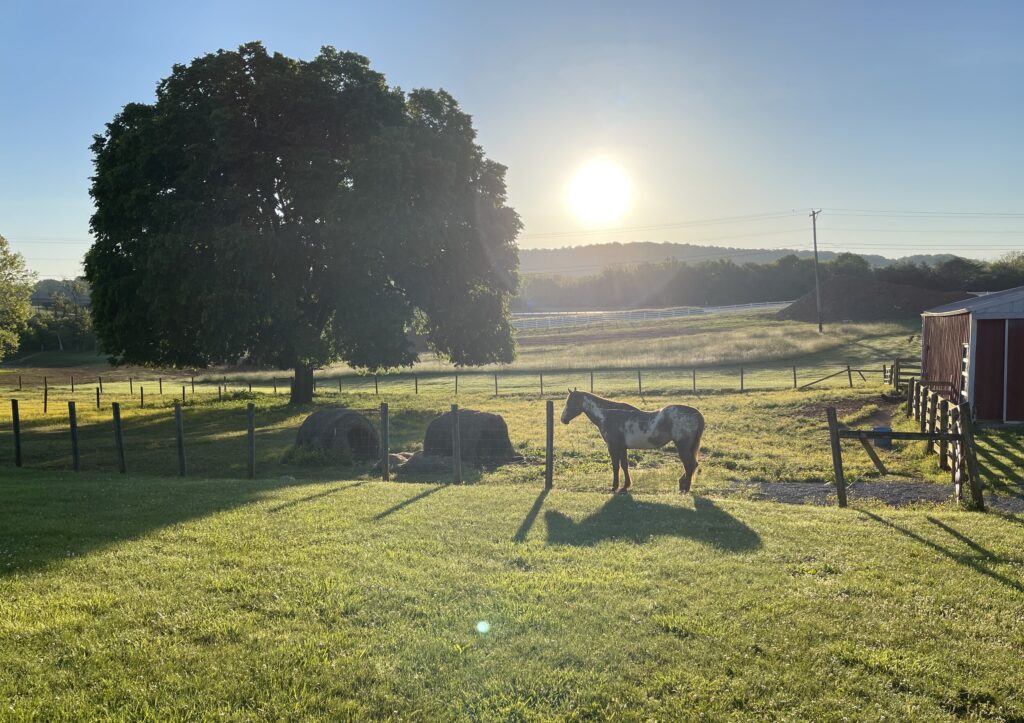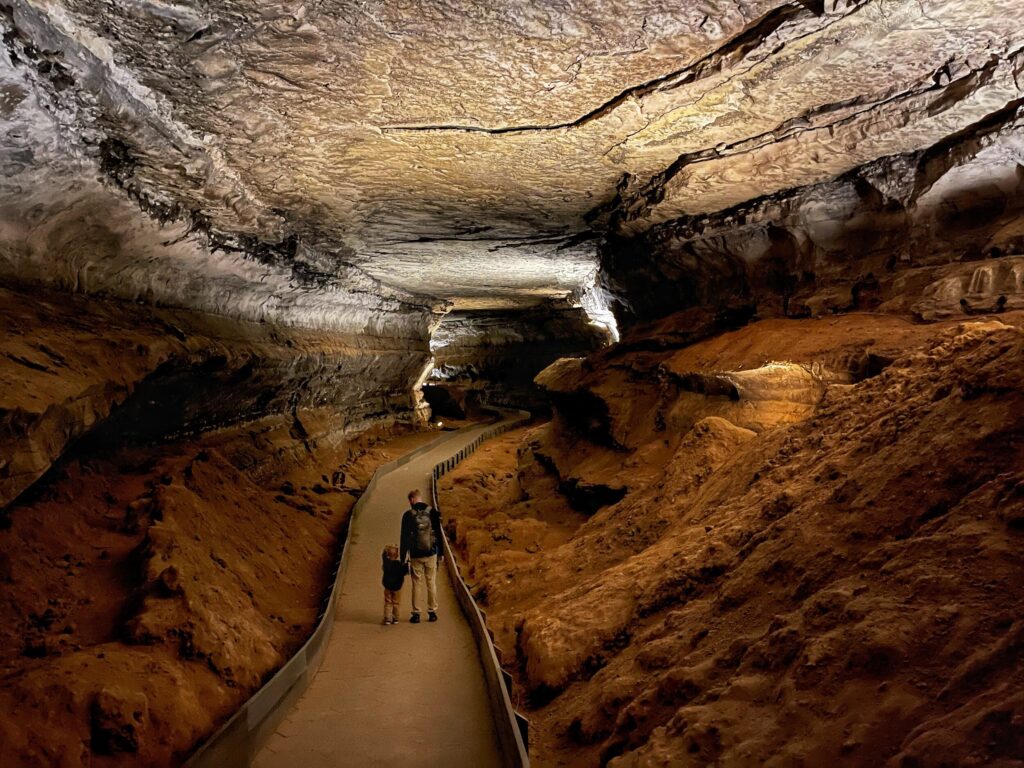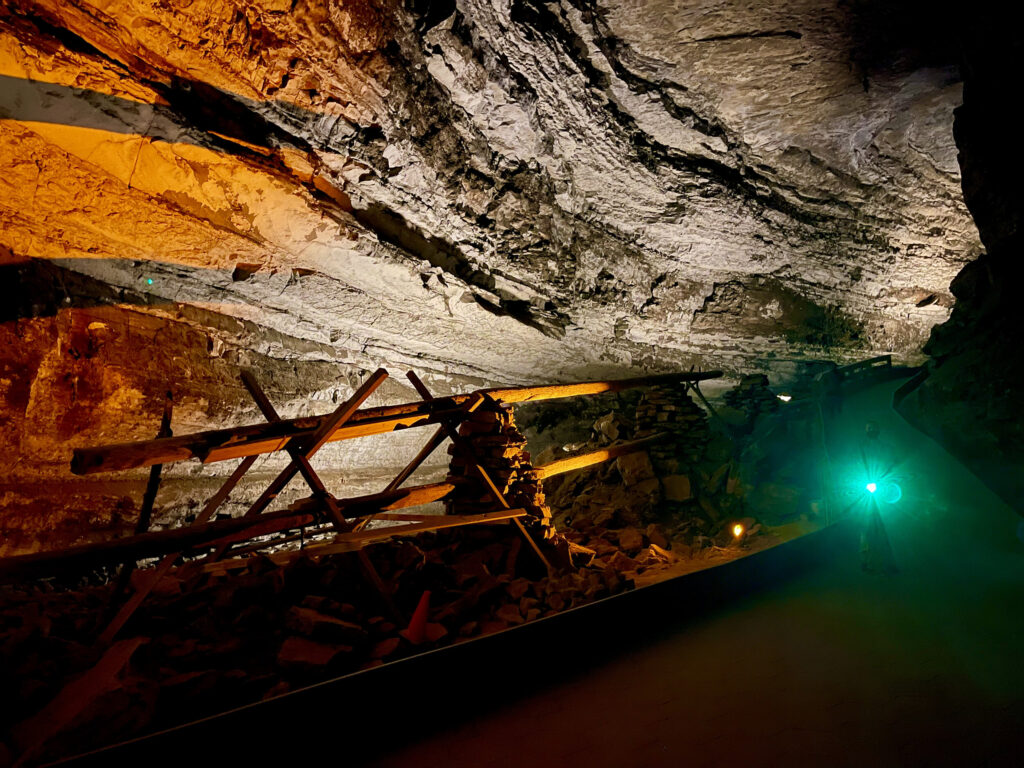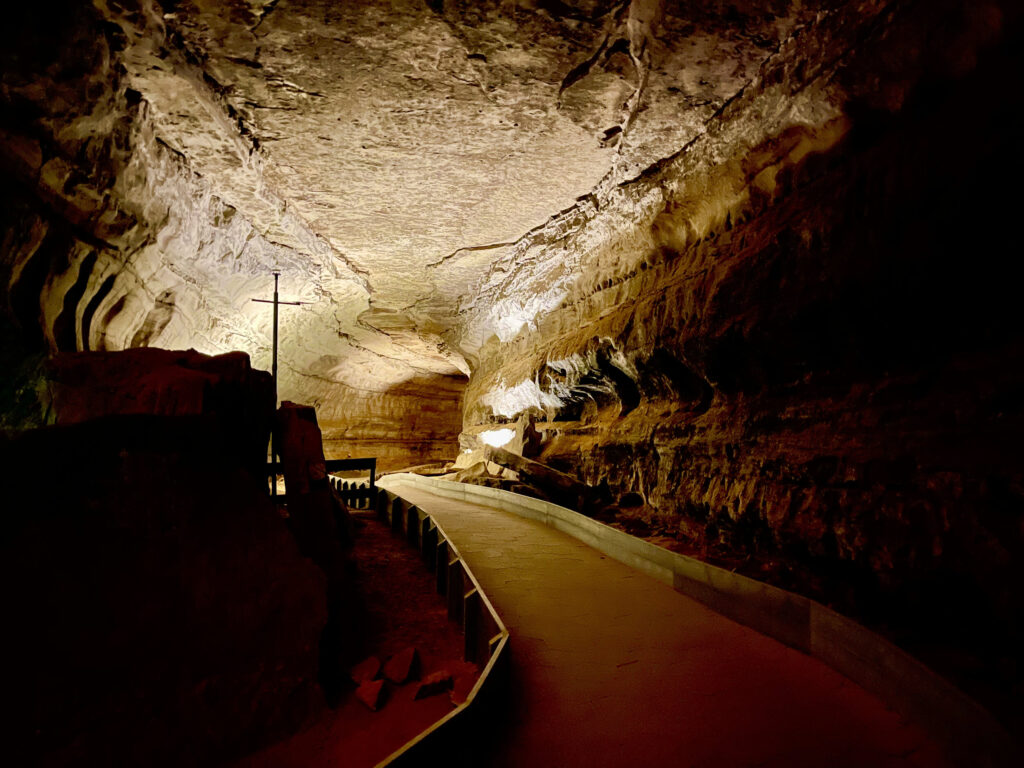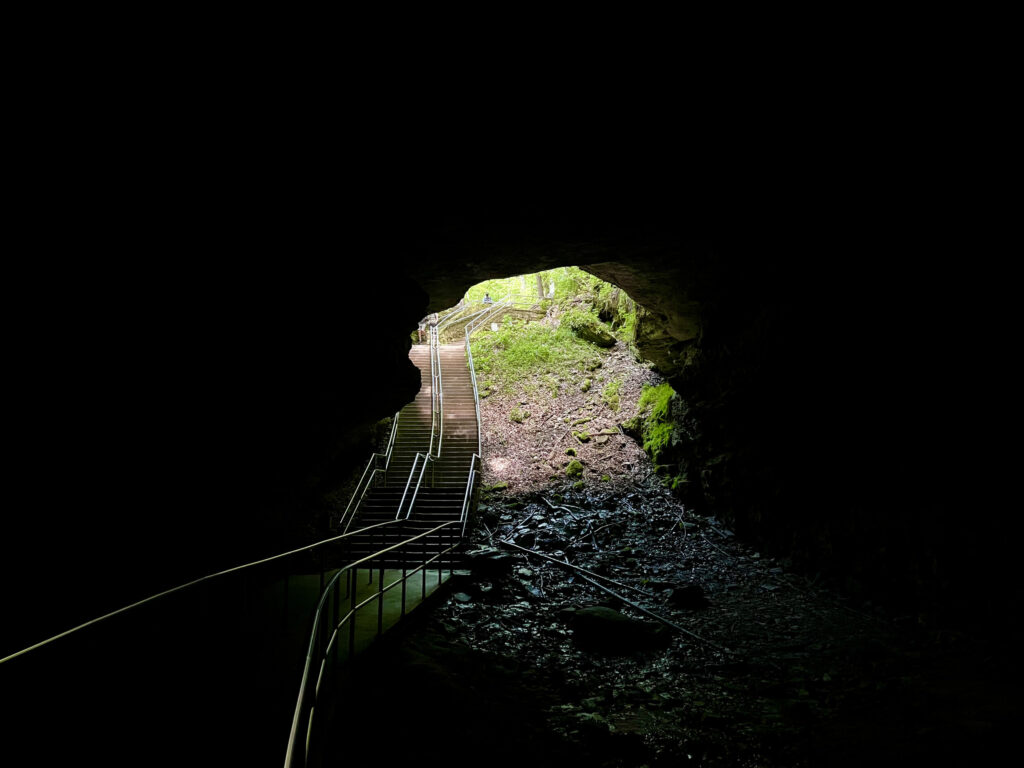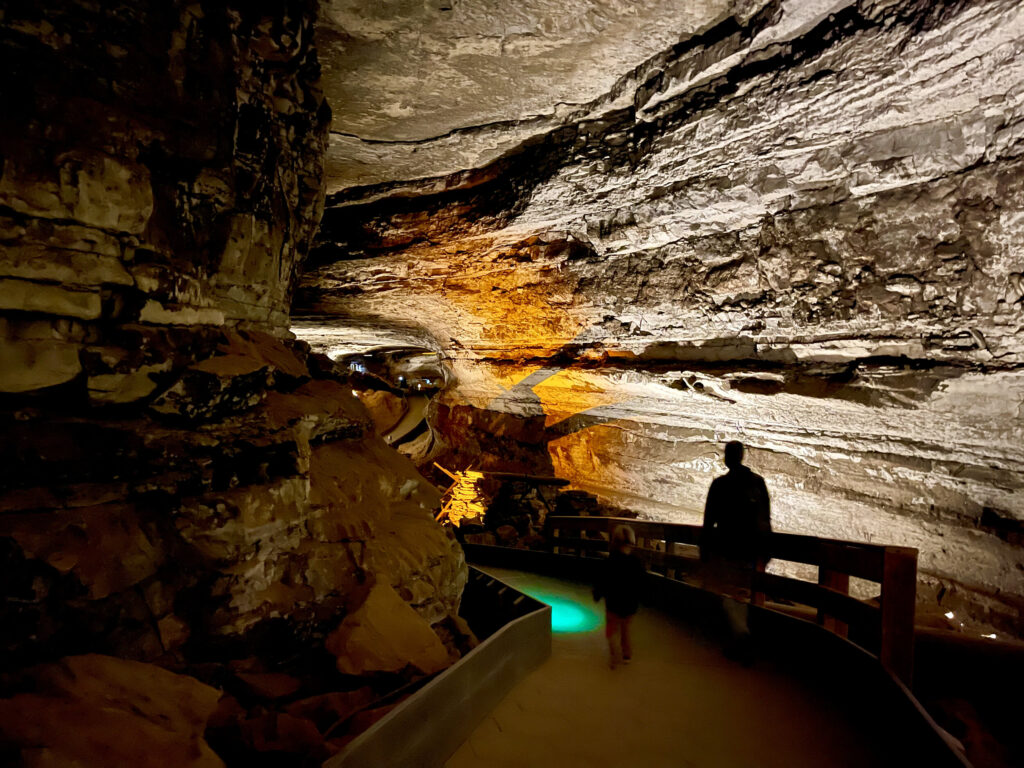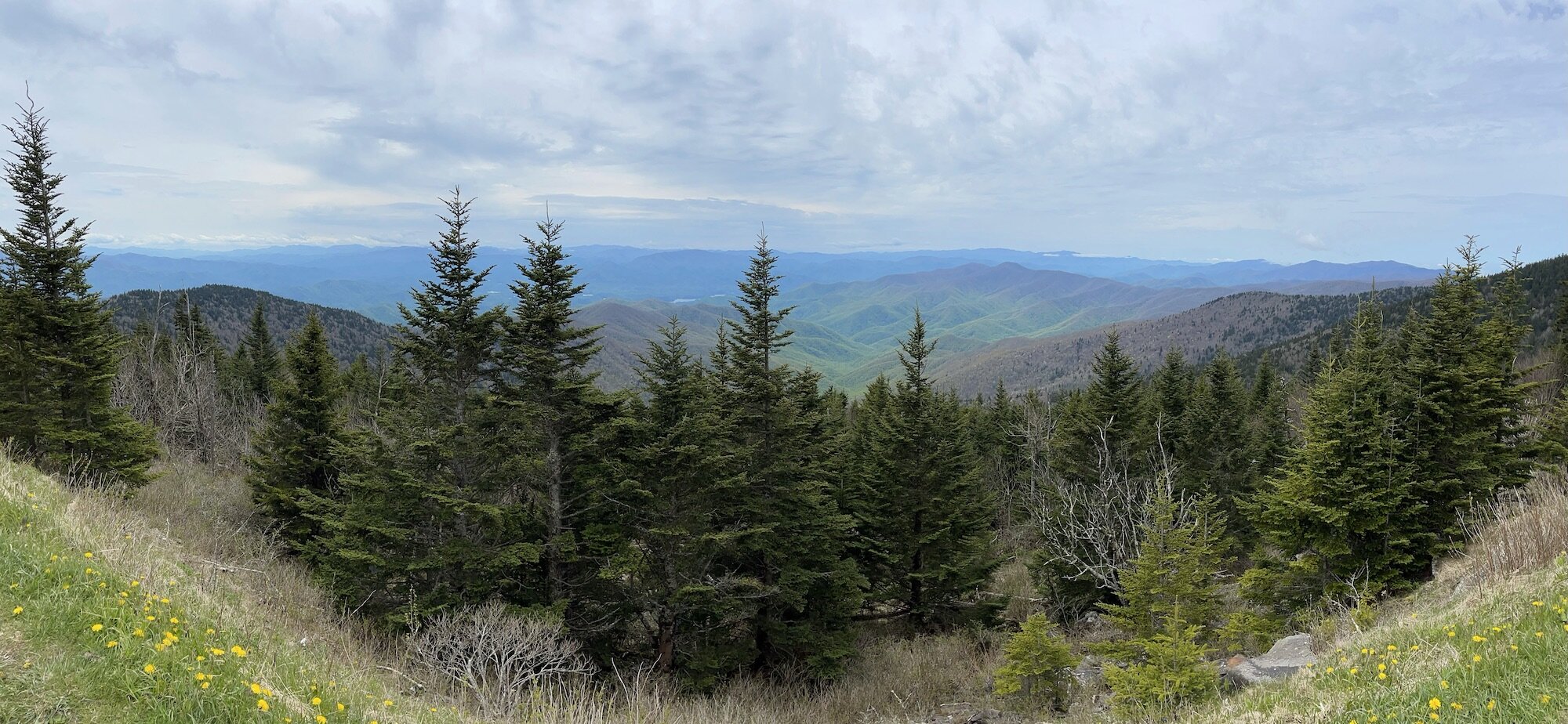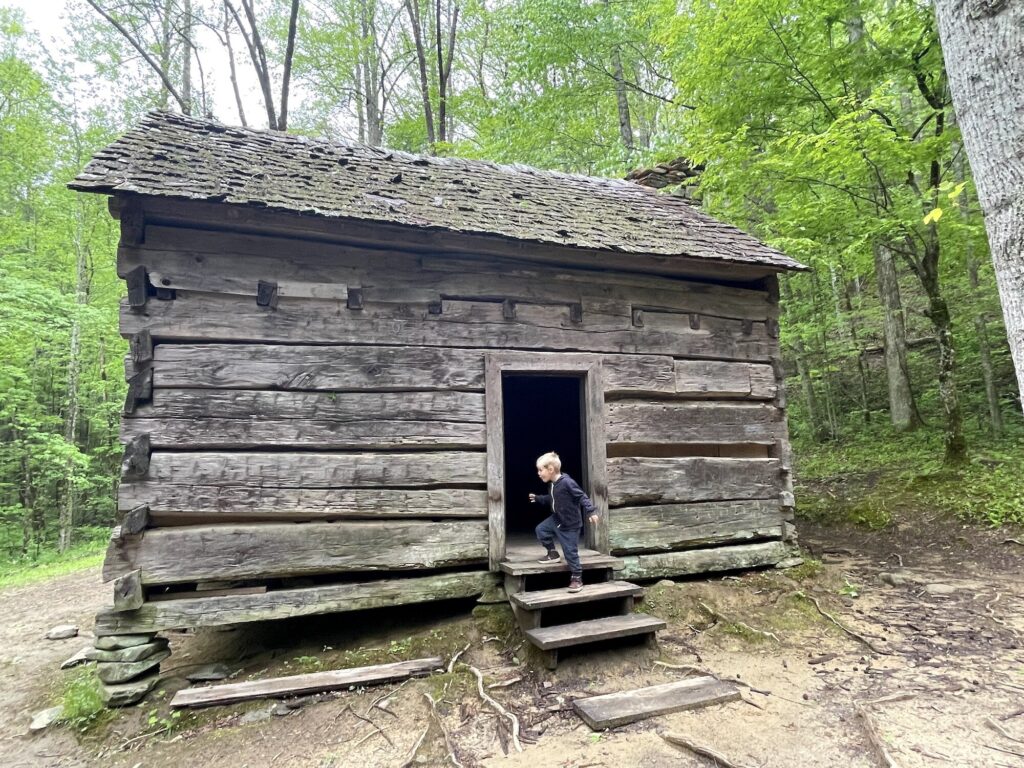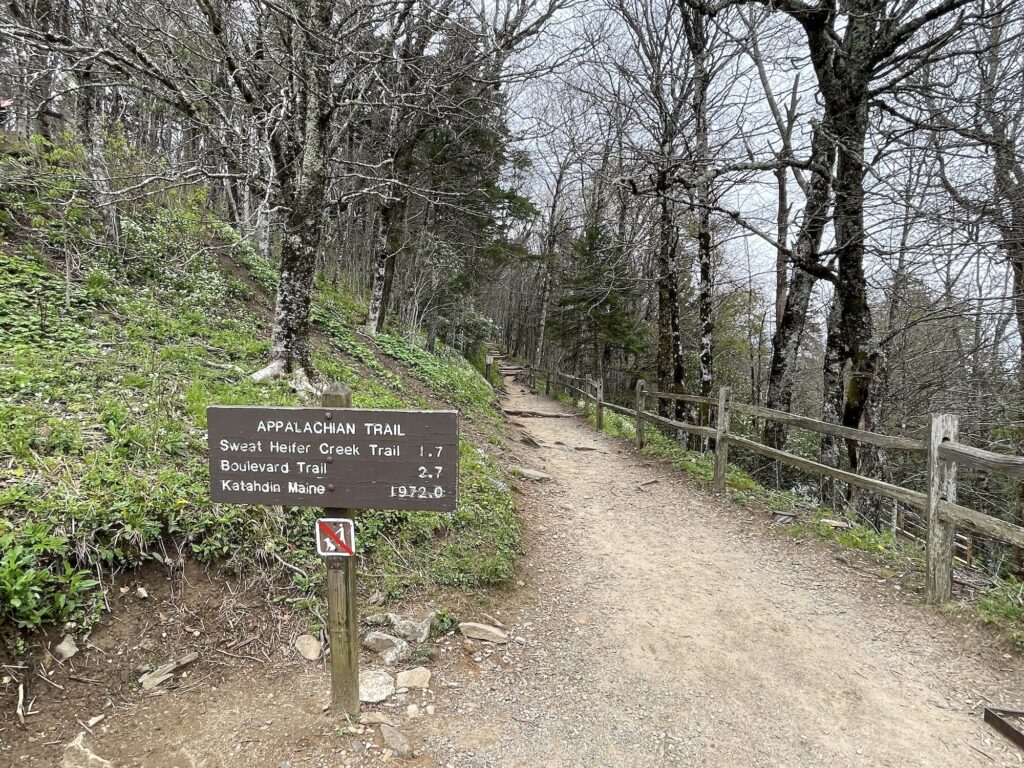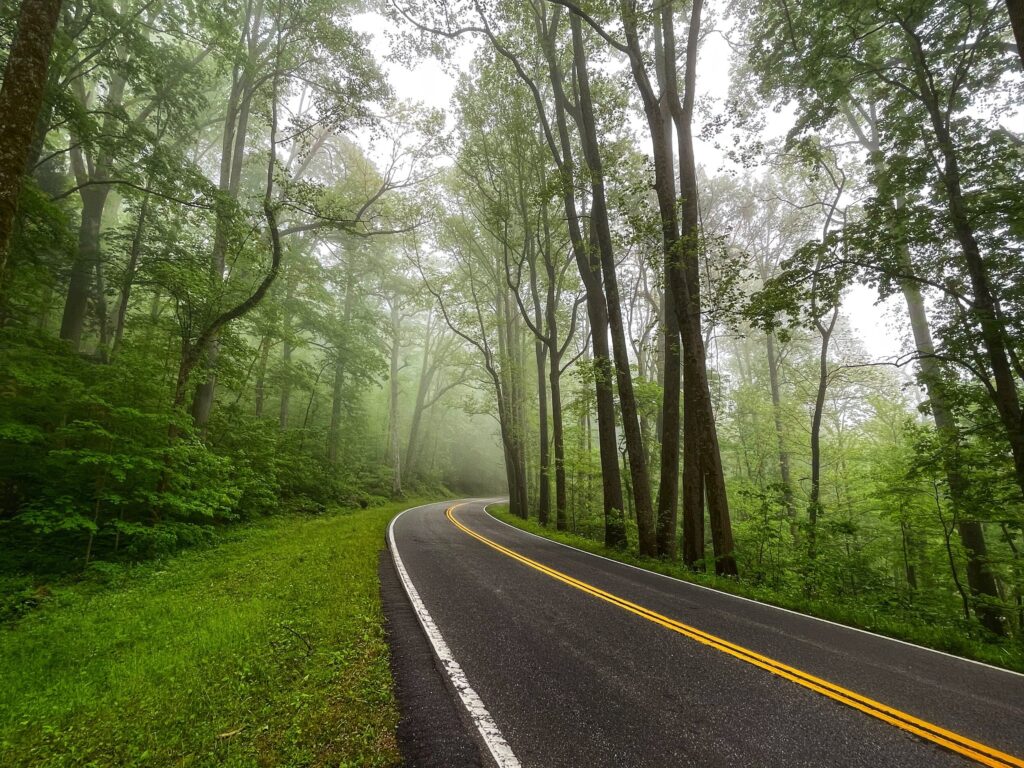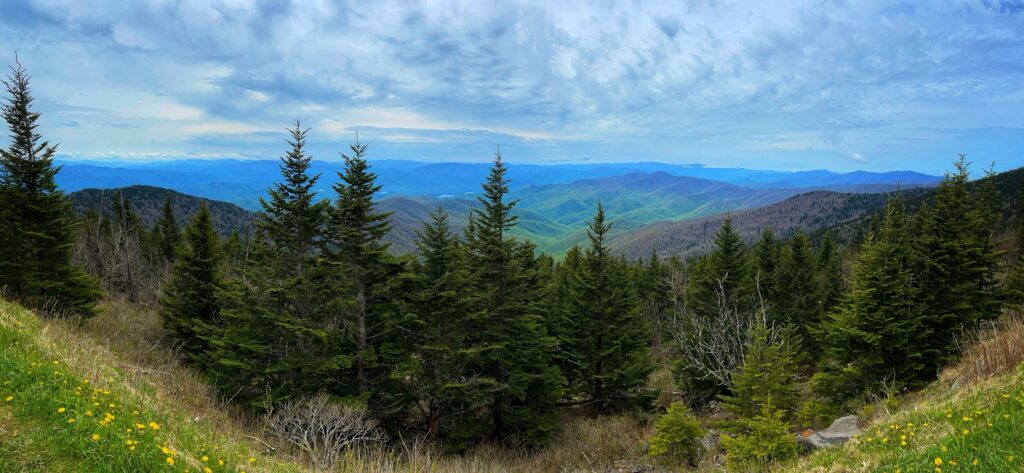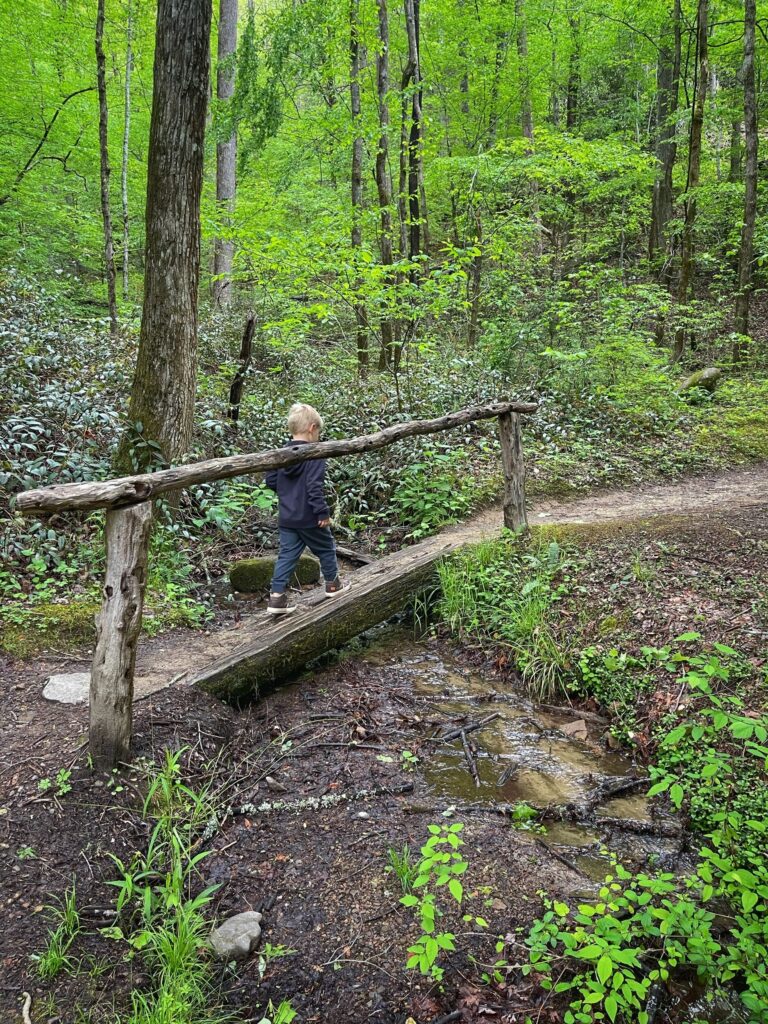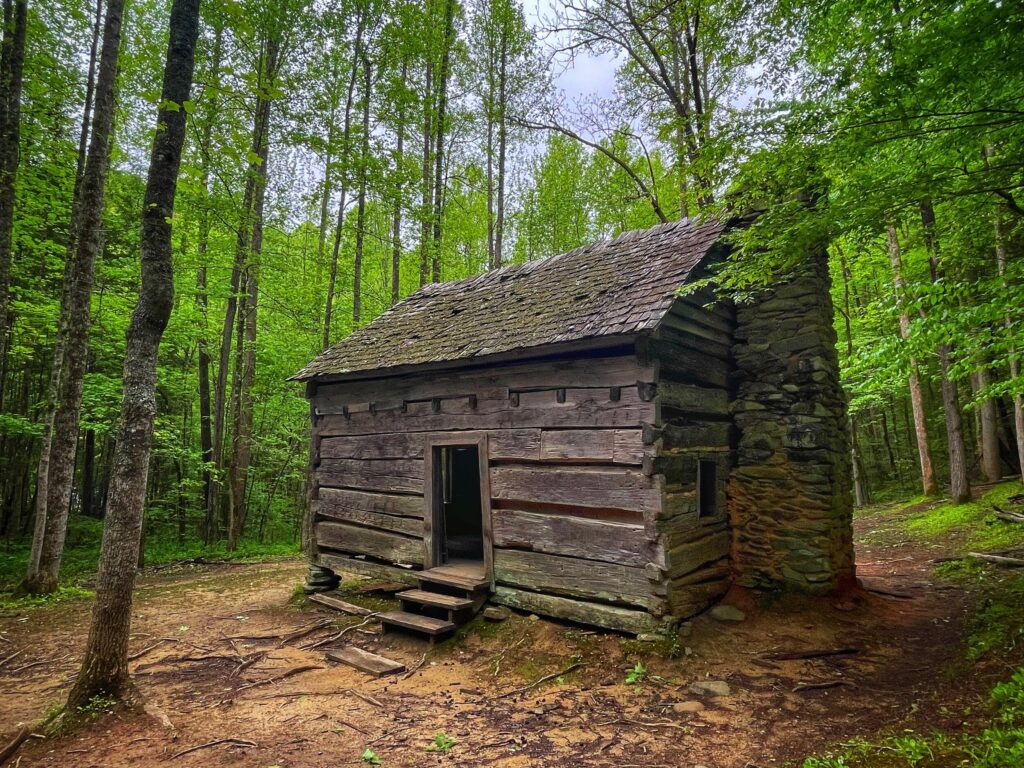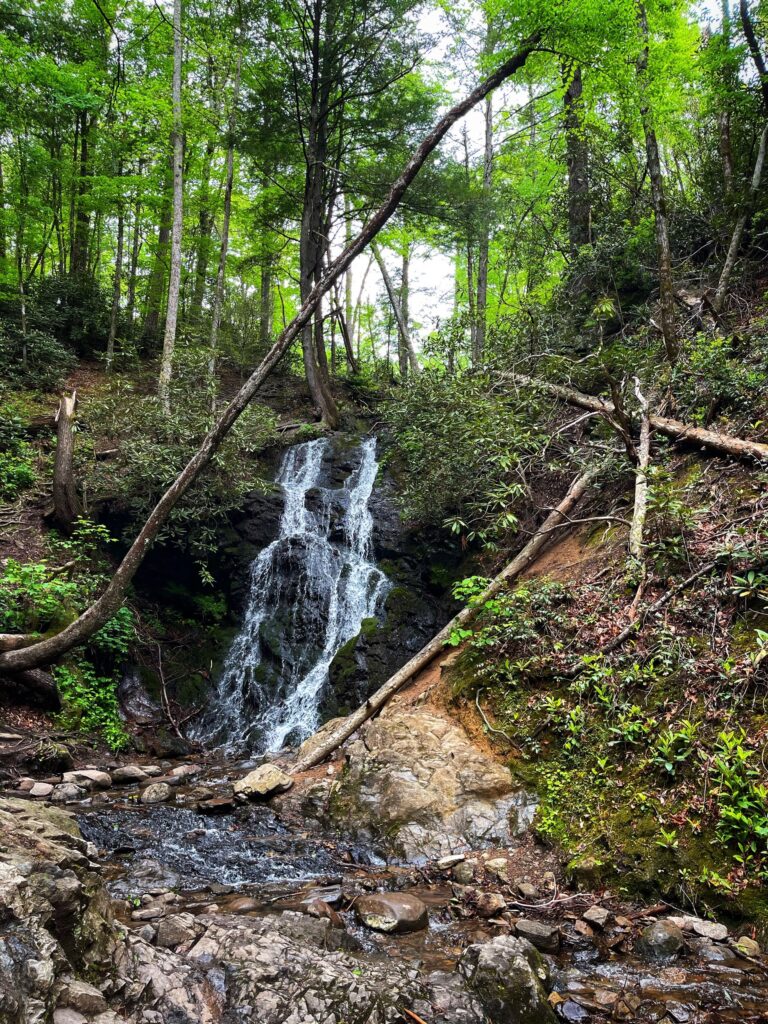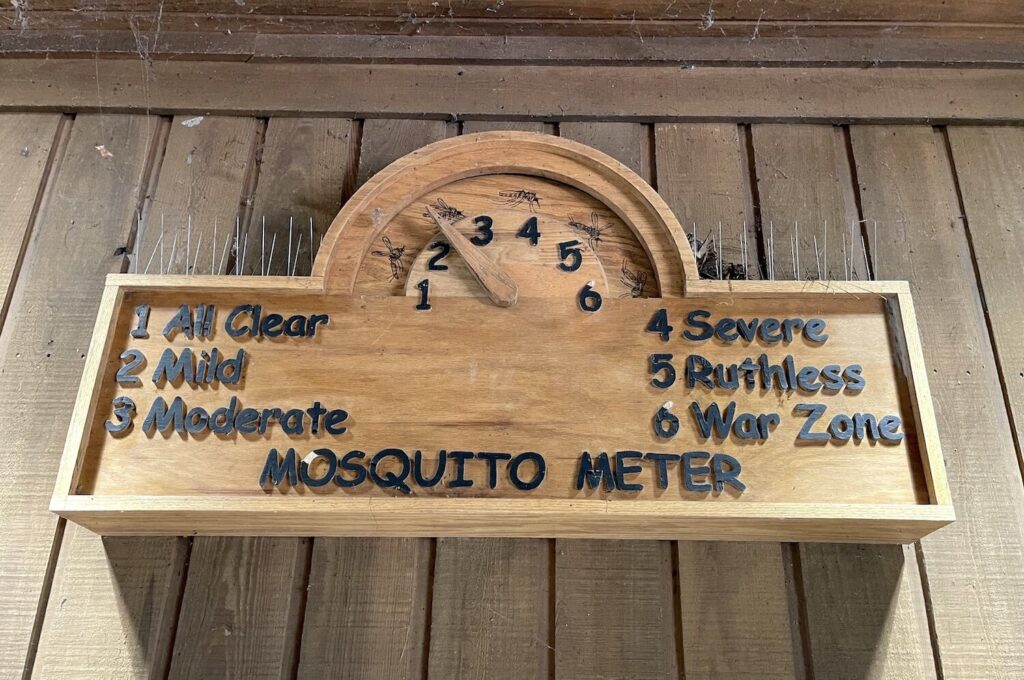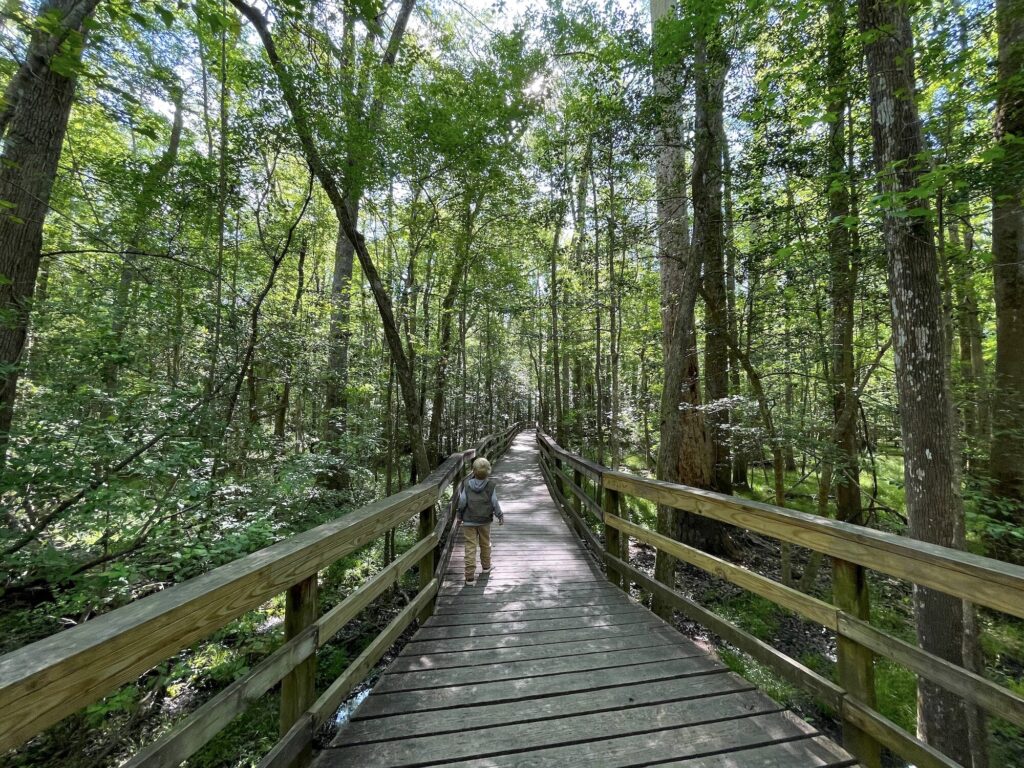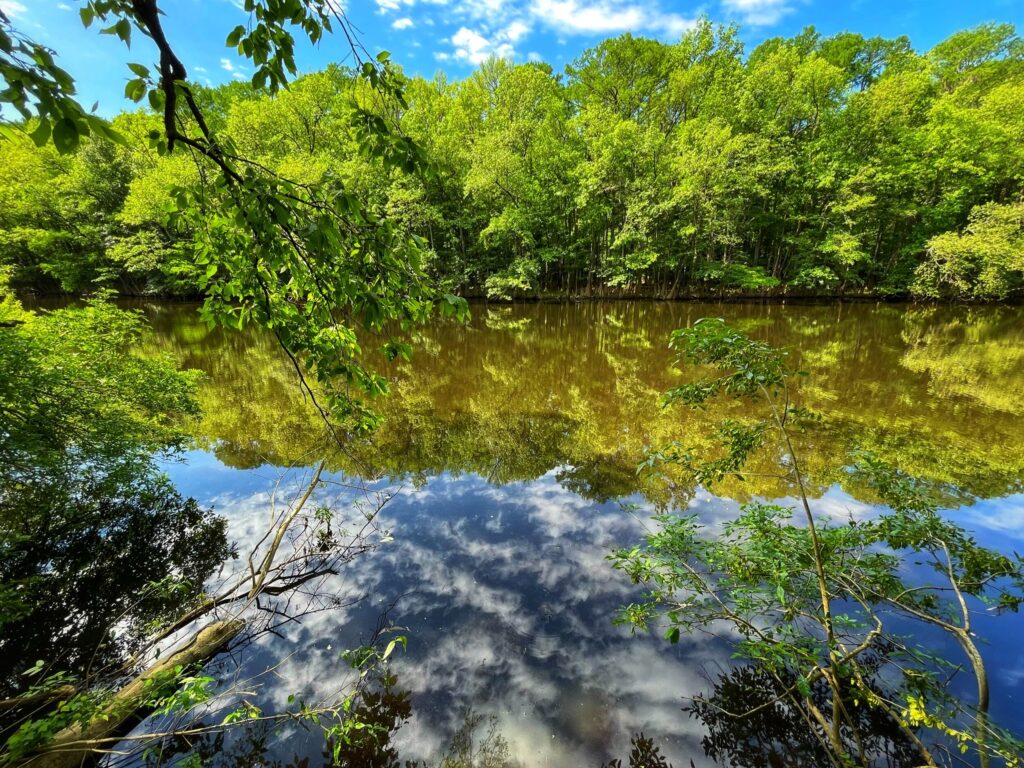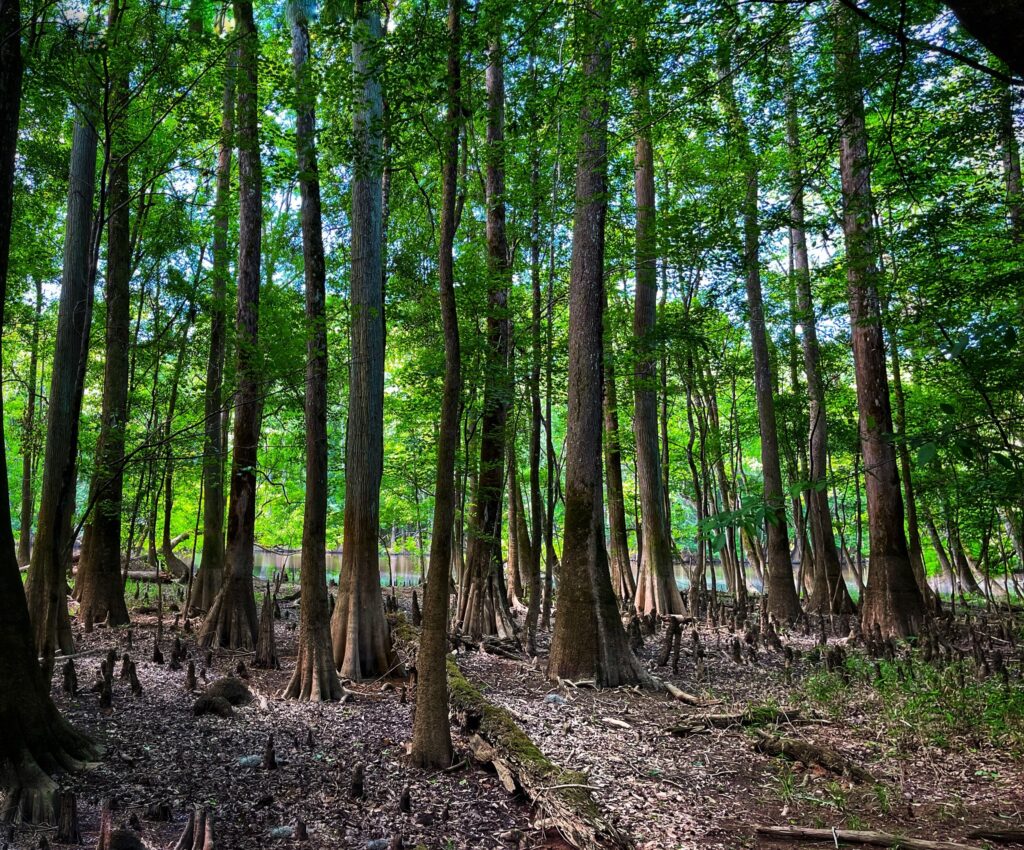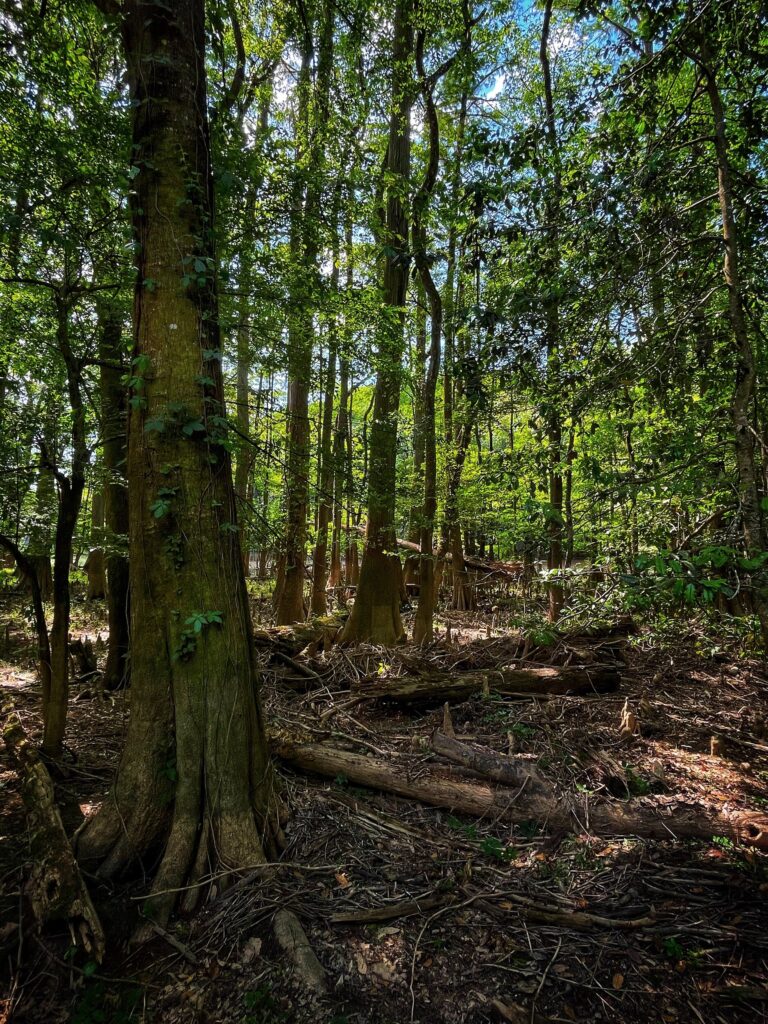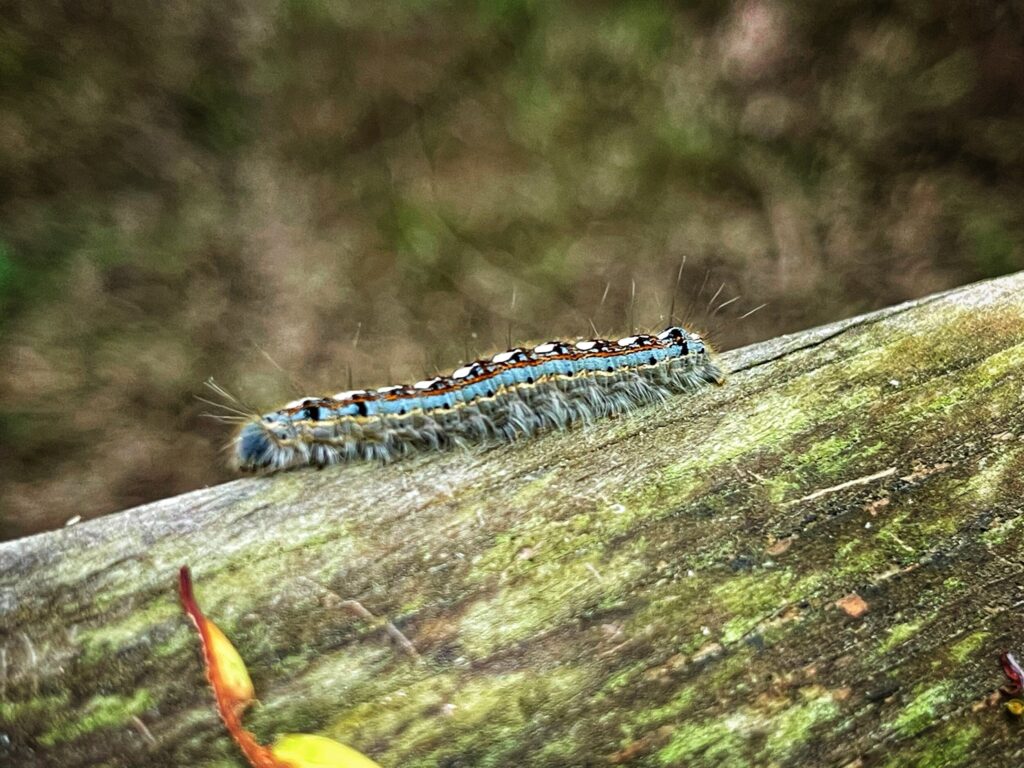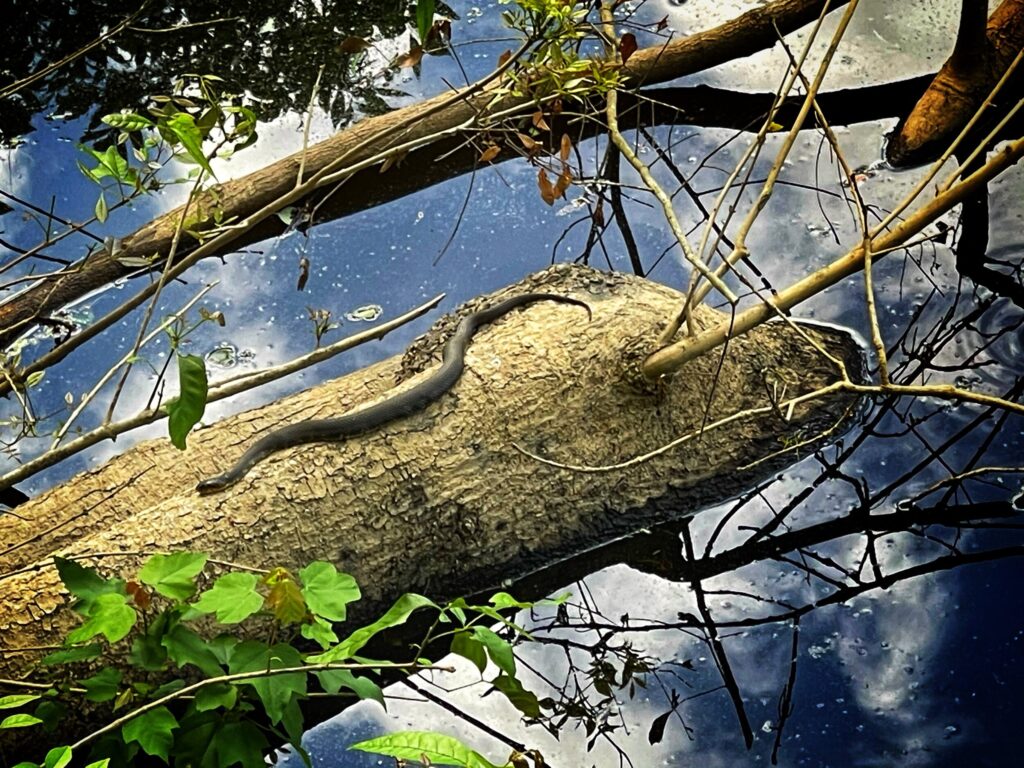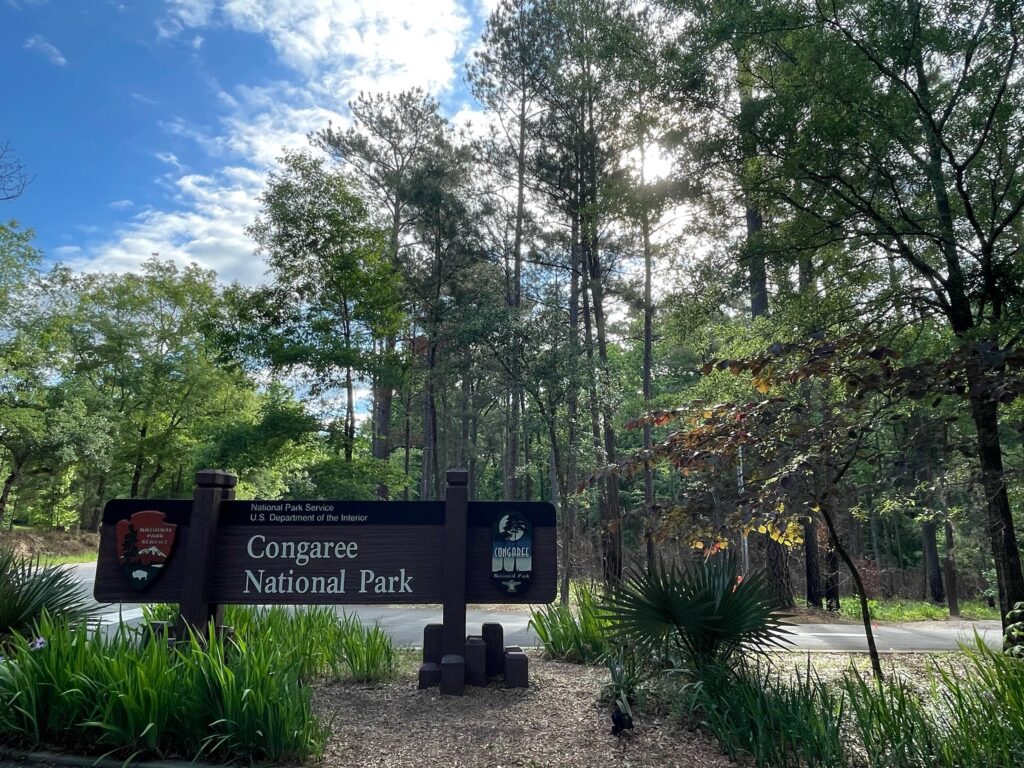Dates we visited: July 19th-20th, 2021
Where we stayed: Loveland RV Resort and Coyote Mountain Lodge
The crisp mountain air and dramatic alpine vistas of Rocky Mountain National Park hold a special place in my heart. Located in northern Colorado, Rocky Mountain is just a few hours west of the college town of Fort Collins. In my younger years, this is where I attended CSU (for a few years) and then lived, worked and played (for many more years). A decade after moving to Minnesota, I would return here with the love of my life to hold our wedding ceremony at Sprague Lake inside the National Park.
This time around, we were here in July instead of March, and there were wildflowers in bloom rather than snow on the ground and ice on the lakes. This national park is great in any season, and Kristy and I were thrilled that we got to experience the summertime highlights along with Owen.
Estes Park
Estes Park is the gateway city for Rocky Mountain National Park. It’s a beautiful mountain town. There are several campgrounds here, but the drive into the mountains is windy and narrow in spots. So we decided to leave the trailer down at the Loveland RV Resort, and get a hotel room in Estes Park while visiting RMNP.
Rocky Mountain was among the first to implement a timed entry system, and tickets go quickly. If you are planning to visit, make sure to make your reservation early, especially if you plan t visit the popular bear lake area.
Our first stop after arriving in the park was the Beaver Meadows visitor center to pick up Junior Ranger materials for Owen. After that, we headed up Bear Lake Road to Sprague Lake. The hike around Sprague Lake is relatively short and accessible. It was a hot day, but there was still snow visible on the craggy peaks in the distance. When we reached the dock, about halfway around the lake, Kristy and I enjoyed reminiscing about our wedding day at this spot. After we completed the hike, we continued the scenic drive up Bear Lake Road, then back down through Moraine park, before heading back to Estes Park for dinner.
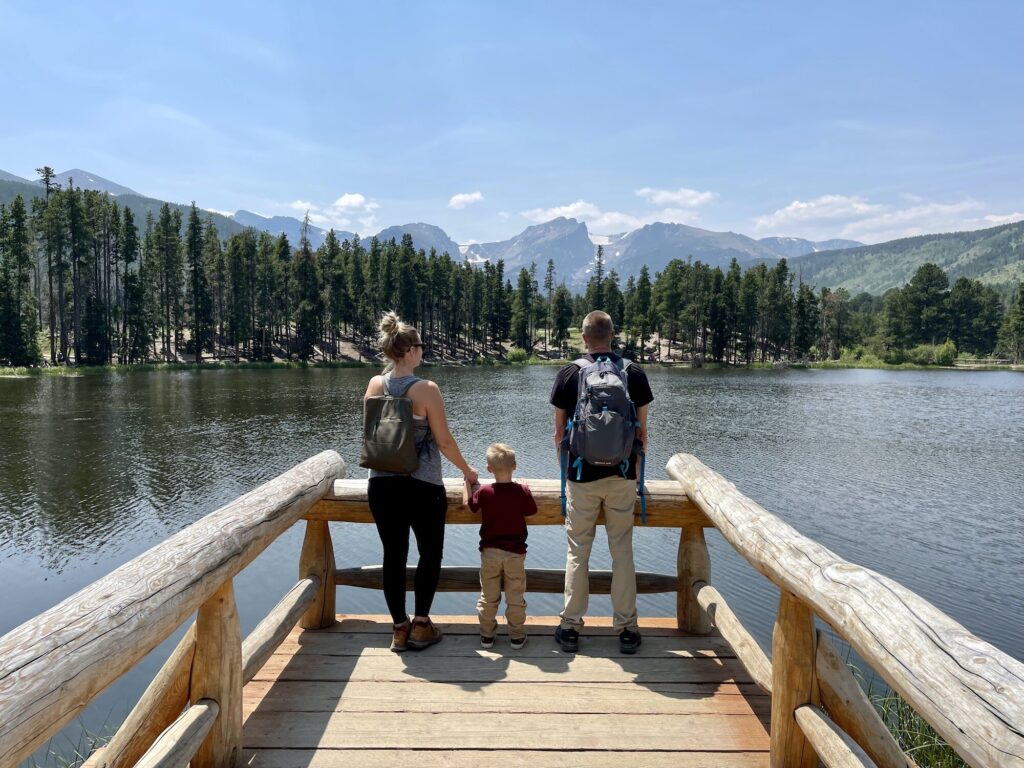
It’s pretty common to spot Elk in the town of Estes Park, and this day was no exception. We saw several young bucks wandering through the city. It’s quite an experience to see these creatures just walking around!
Moose to Marmots
On our second day in Rocky Mountain we got an early start and entered the park through the Fall River entrance. This route took us through Horseshoe park, an open space where the mountains rise on all sides and the Fall River meanders through the valley. Not more than five minutes into the park we saw a gigantic moose bathing in the river. A few minutes later a group of motorcyclists came down the road. The deep and loud exhaust from the bikes startled the Moose and it galloped off across the valley.
We continued through the valley and started making our way up the mountain to Trail Ridge Road. It’s billed as the highest continuously paved road in the United States and reaches a peak elevation of 12,183 Feet. That’s a full mile higher than the mile-high city of Denver. The drive is incredible, and while you might imagine it as rough mountain terrain, there is actually an abundance of life here. Even above the treeline, we spotted marmots, prairie dogs and birds, not to mention a variety of colorful wildflowers. The road traverses the National Park, running from Estes Park all the way to Grand Lake. Once we reached the Alpine visitor center, we decided to make our way back down.
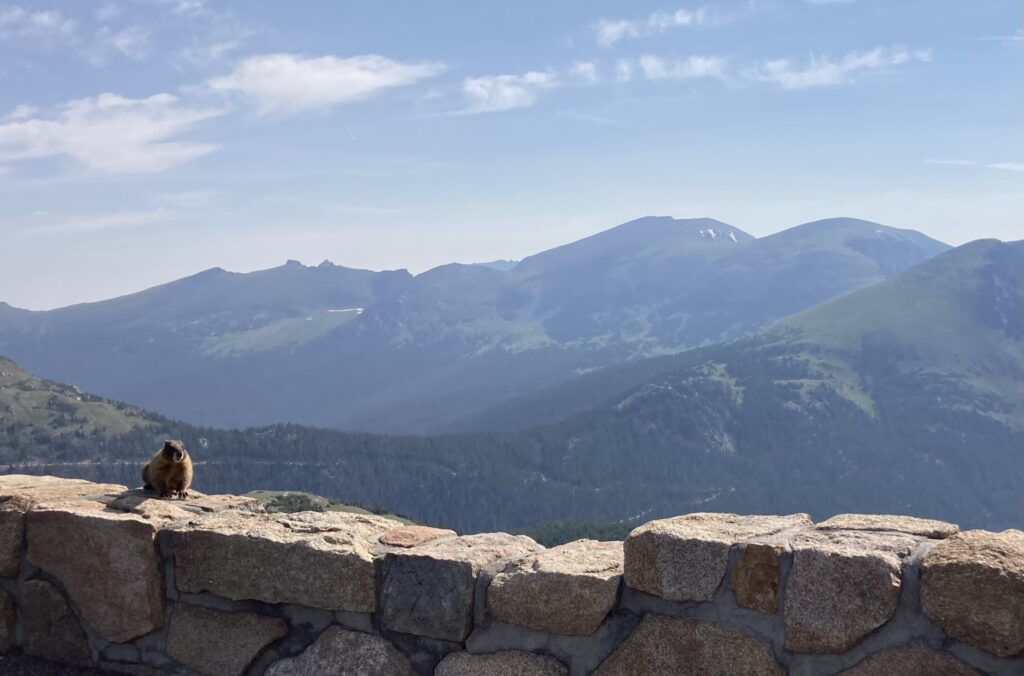
One thing we didn’t do this time, that I’d like to try next time is take Old Fall River Road from the bottom, up to the Alpine Visitor Center. I’m told this road is a rather intense, but rewarding and scenic drive. The one-way road winds back and forth up through the switchbacks of the steep mountains.
Rocky Mountain National Park is one of our favorite parks in the NPS system, and one of our favorite places in the world. It’s popularity has soared recently, and understandably so. If you are planning a visit here a few tips:
- Don’t forget to get a reservation!
- Consider visiting in an off-peak season. Winter is especially beautiful.
- Trail Ridge Road is only scheduled to be open for a few months of the year, and it may close on a whim due to weather. Plan accordingly.
If you are not planning a trip here…get on it! This park, and the surrounding areas are stunning. There are activities and sights for all skill levels and interests.
Rocky Mountain Gallery
Way back in March 2015, we got married in this National Park. It was a small, outdoor ceremony that required a short hike through the snow to the dock at Sprague Lake. This park is particularly special to us, and we enjoyed sharing it with Owen for the first time.
